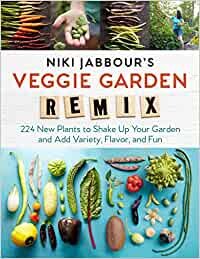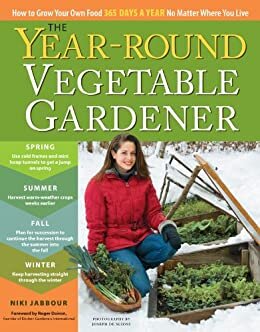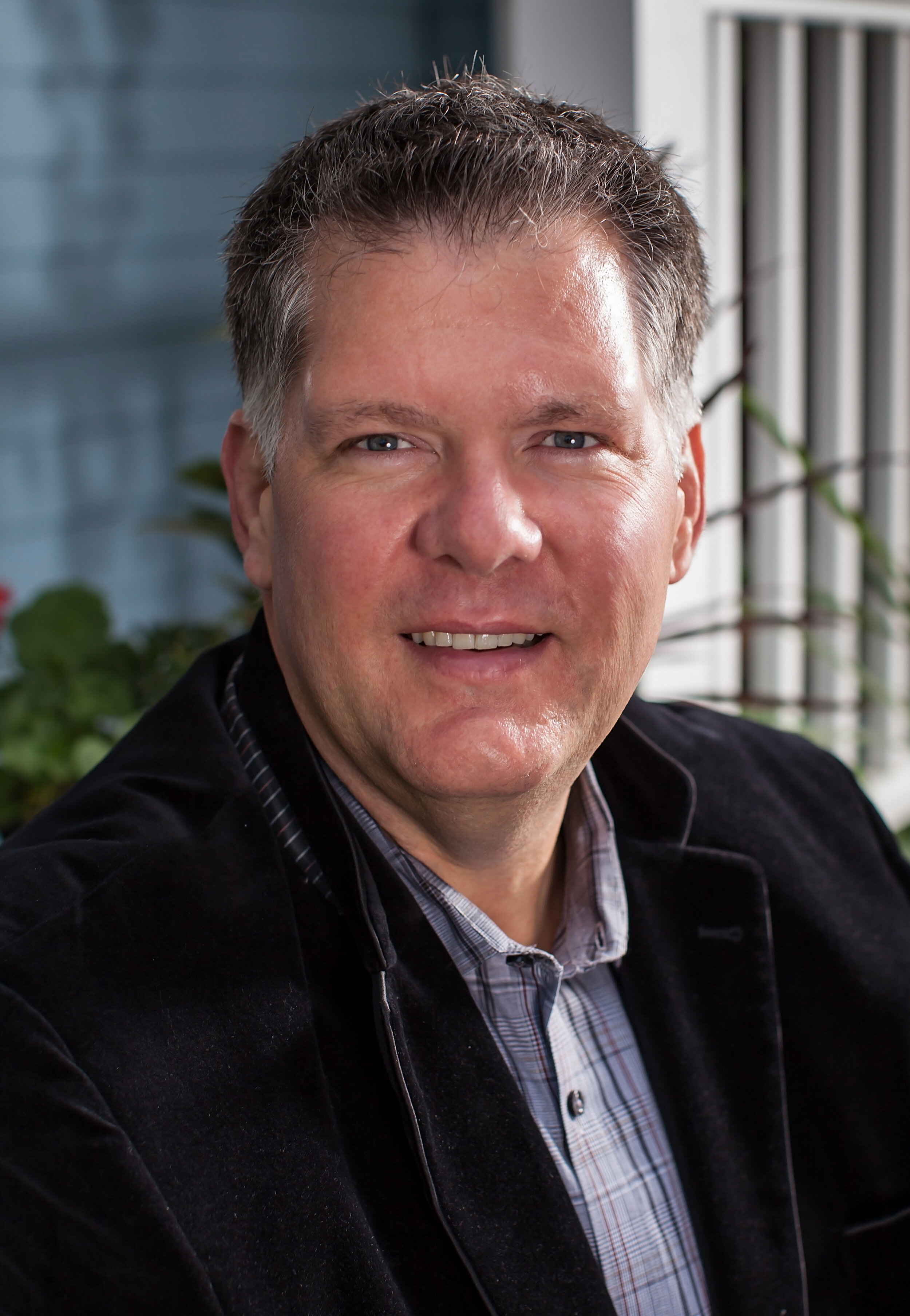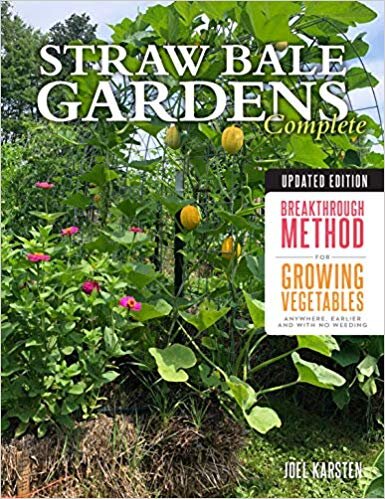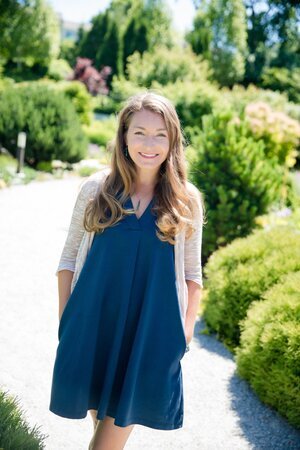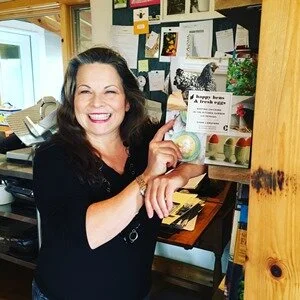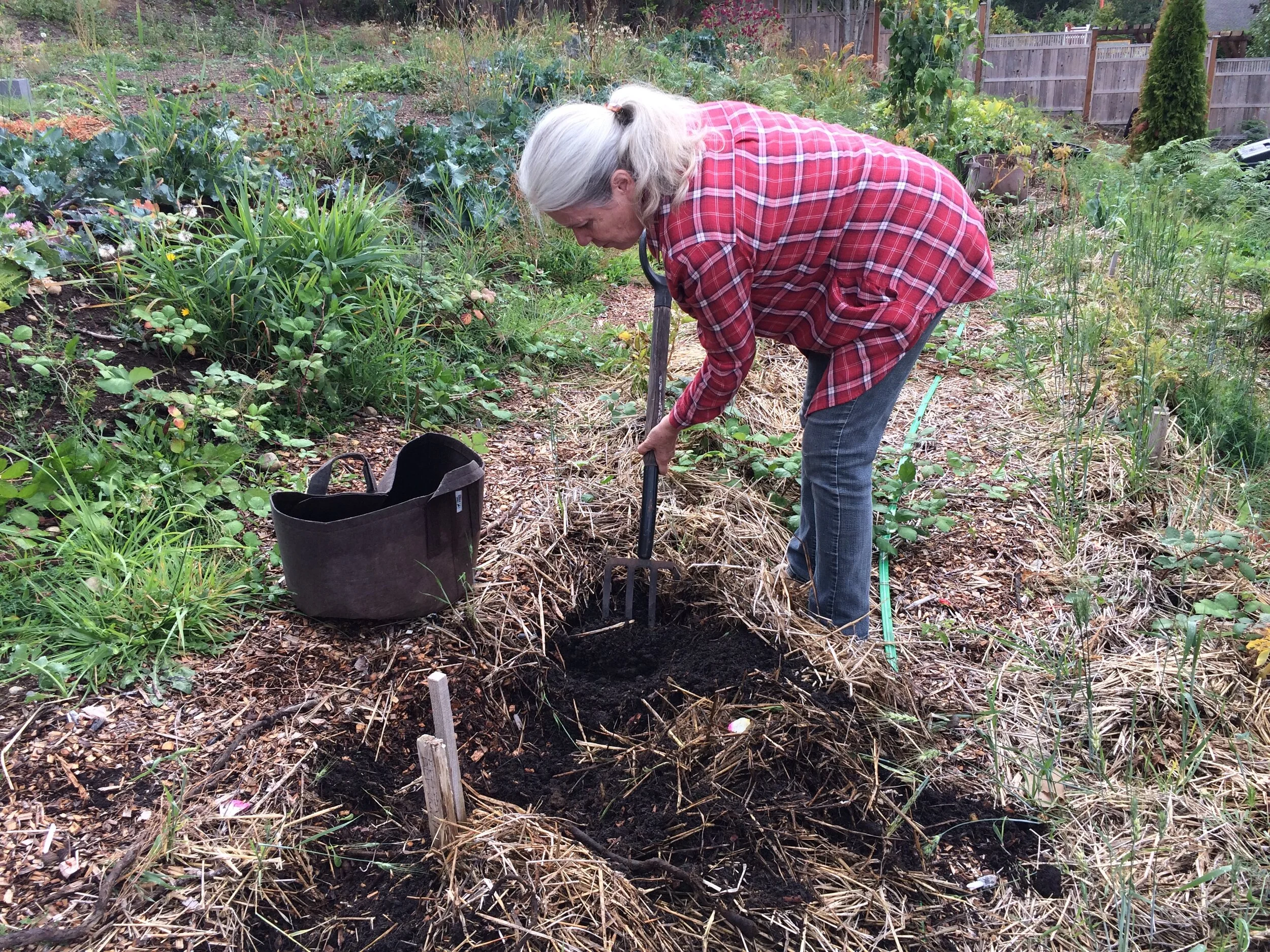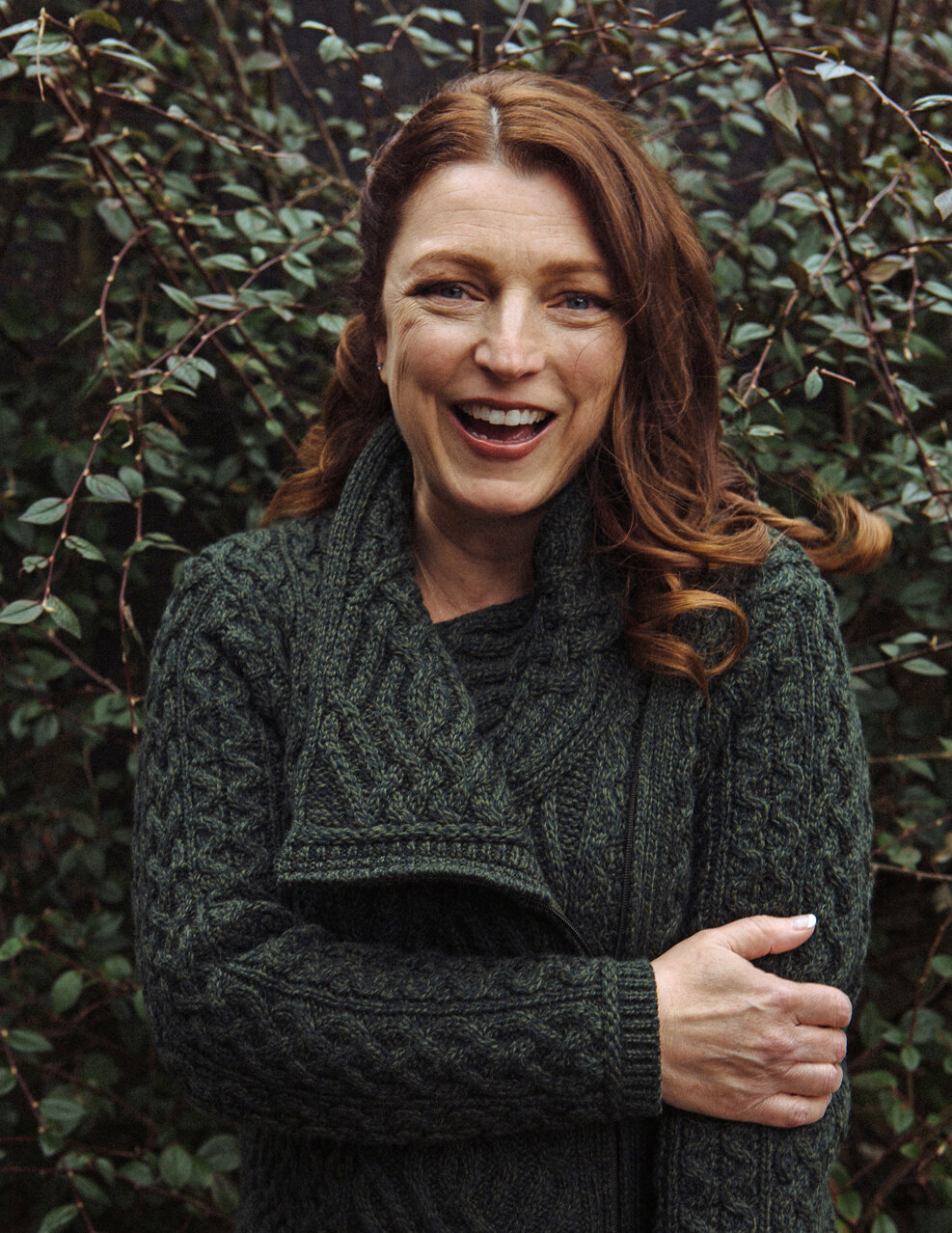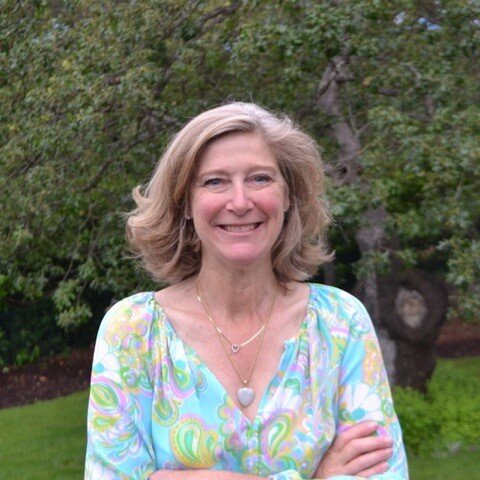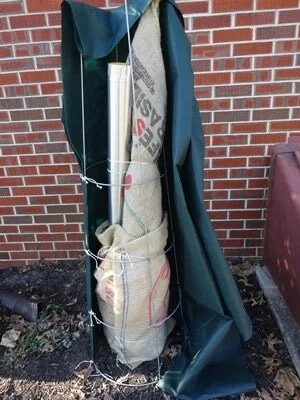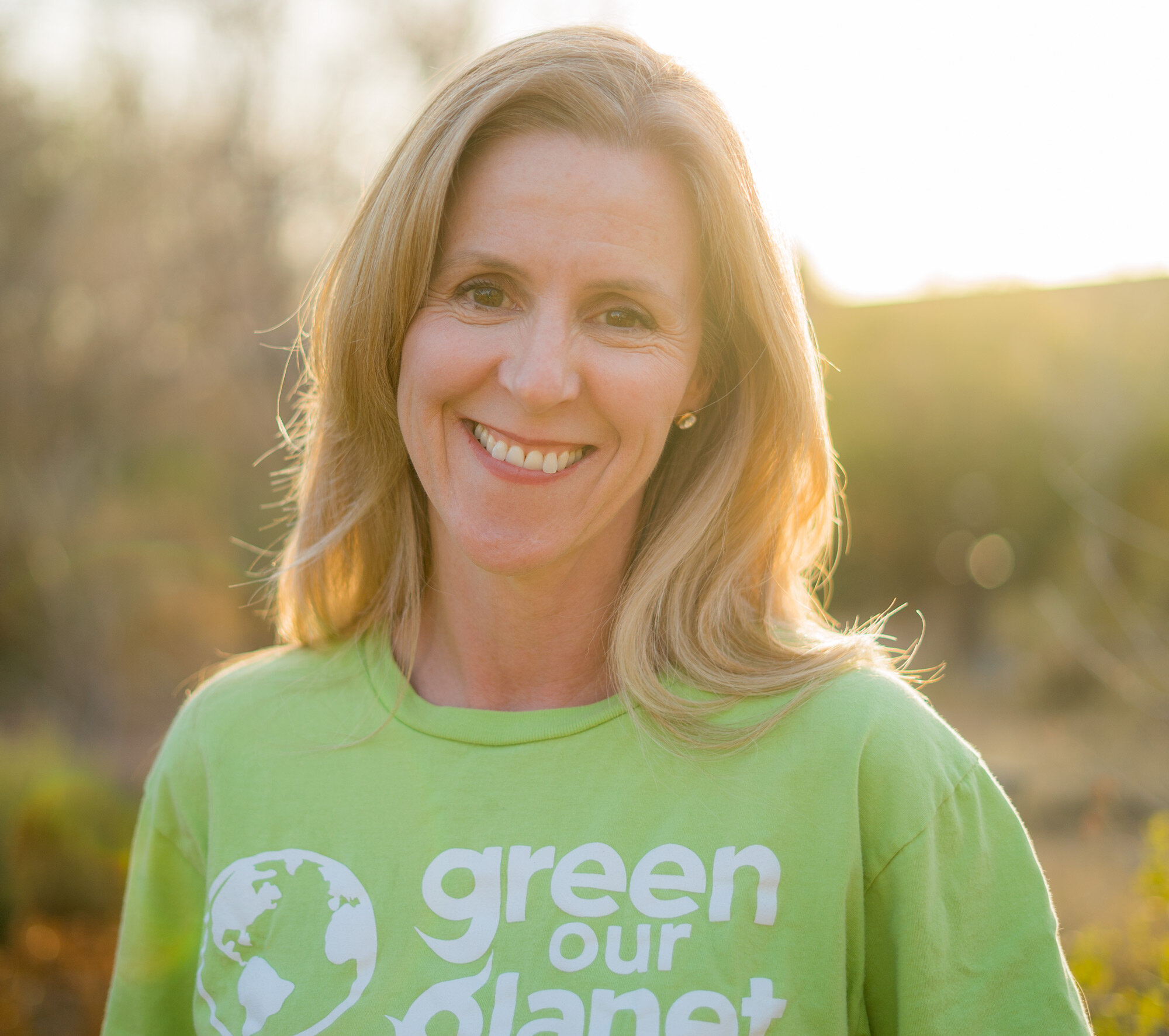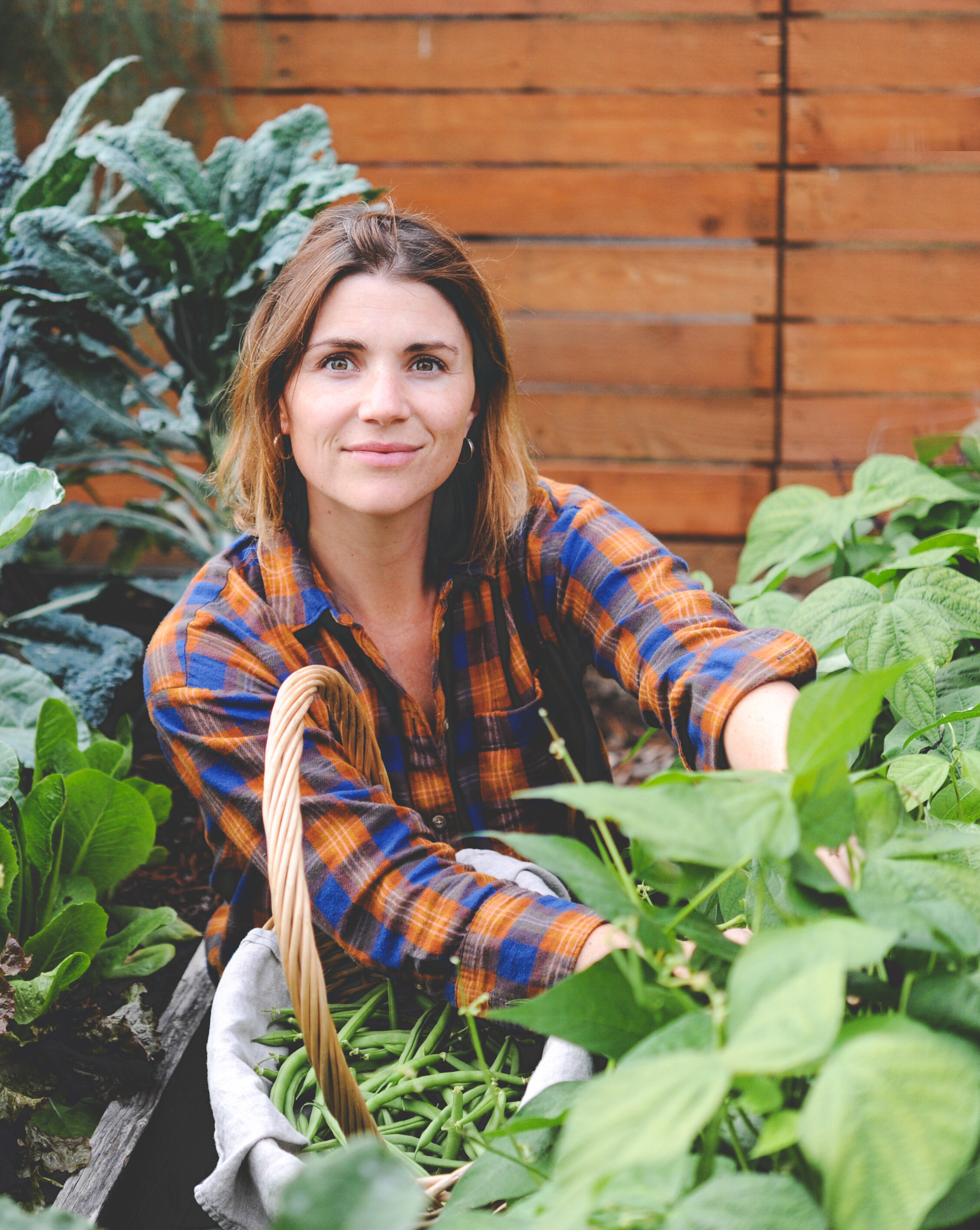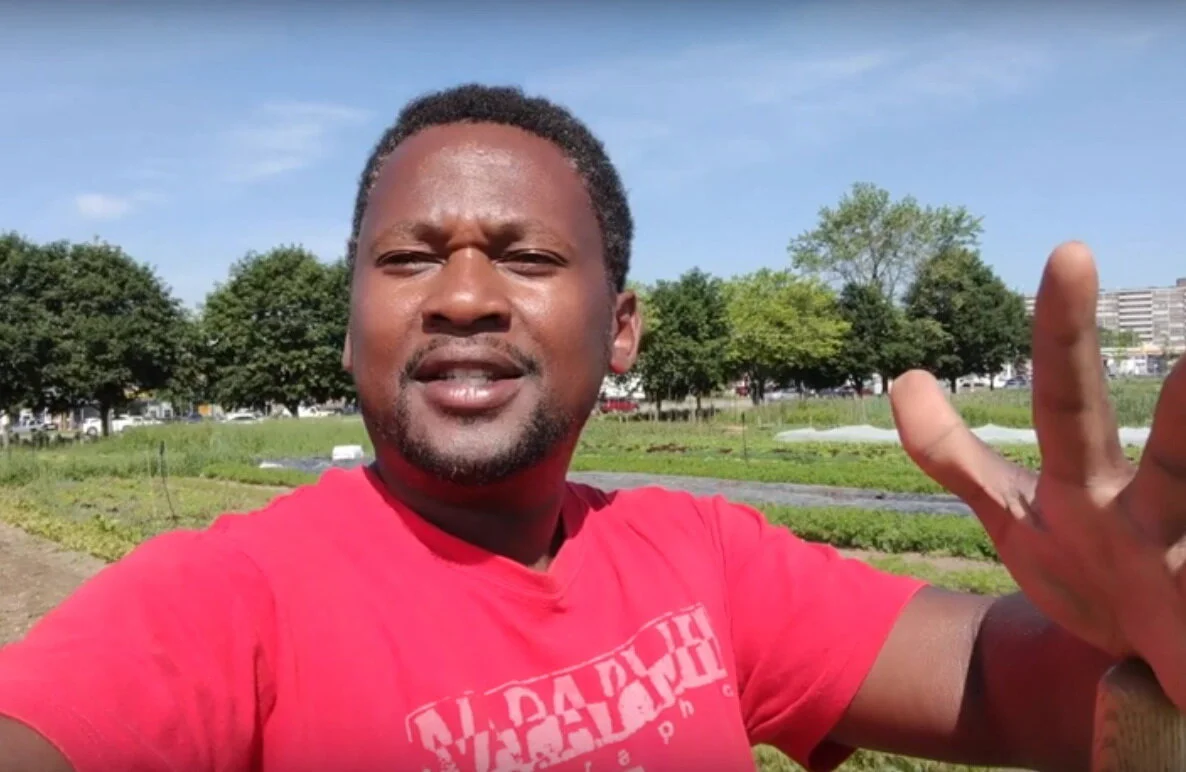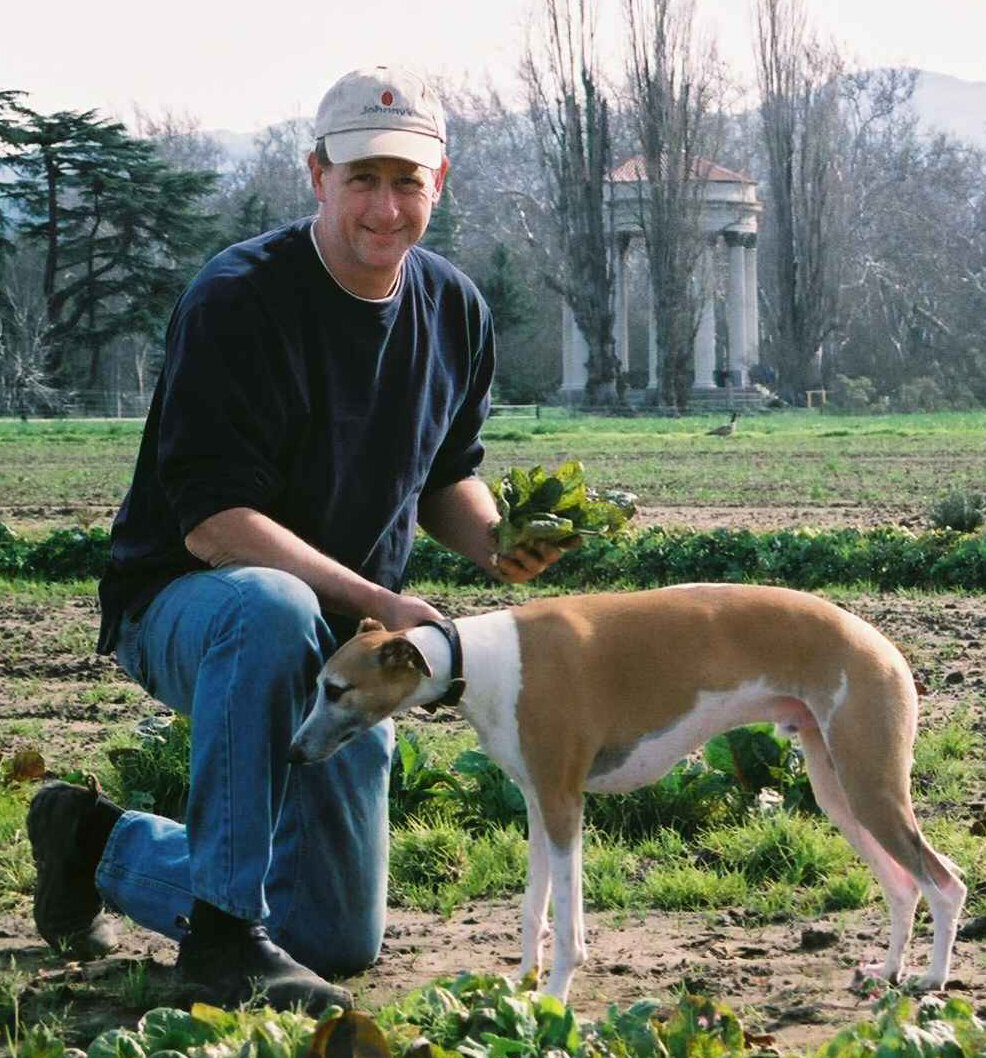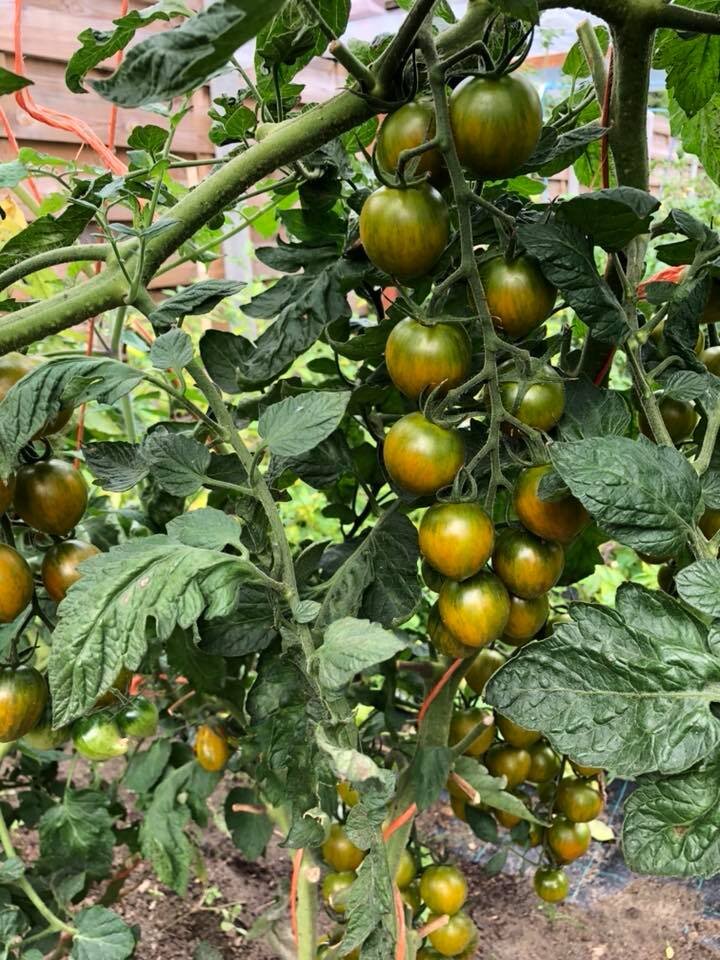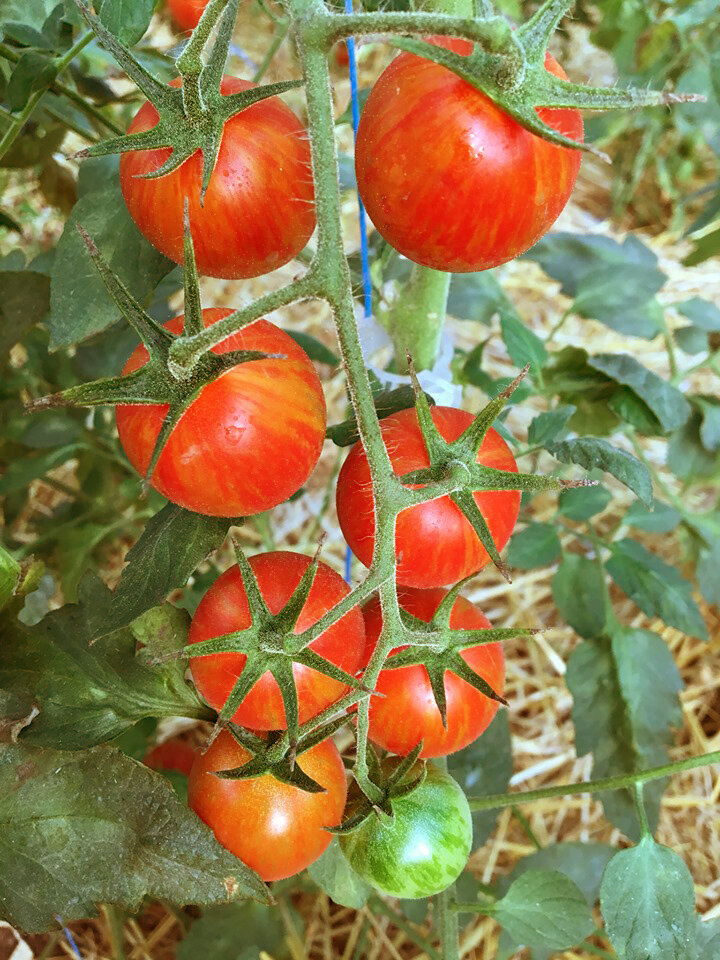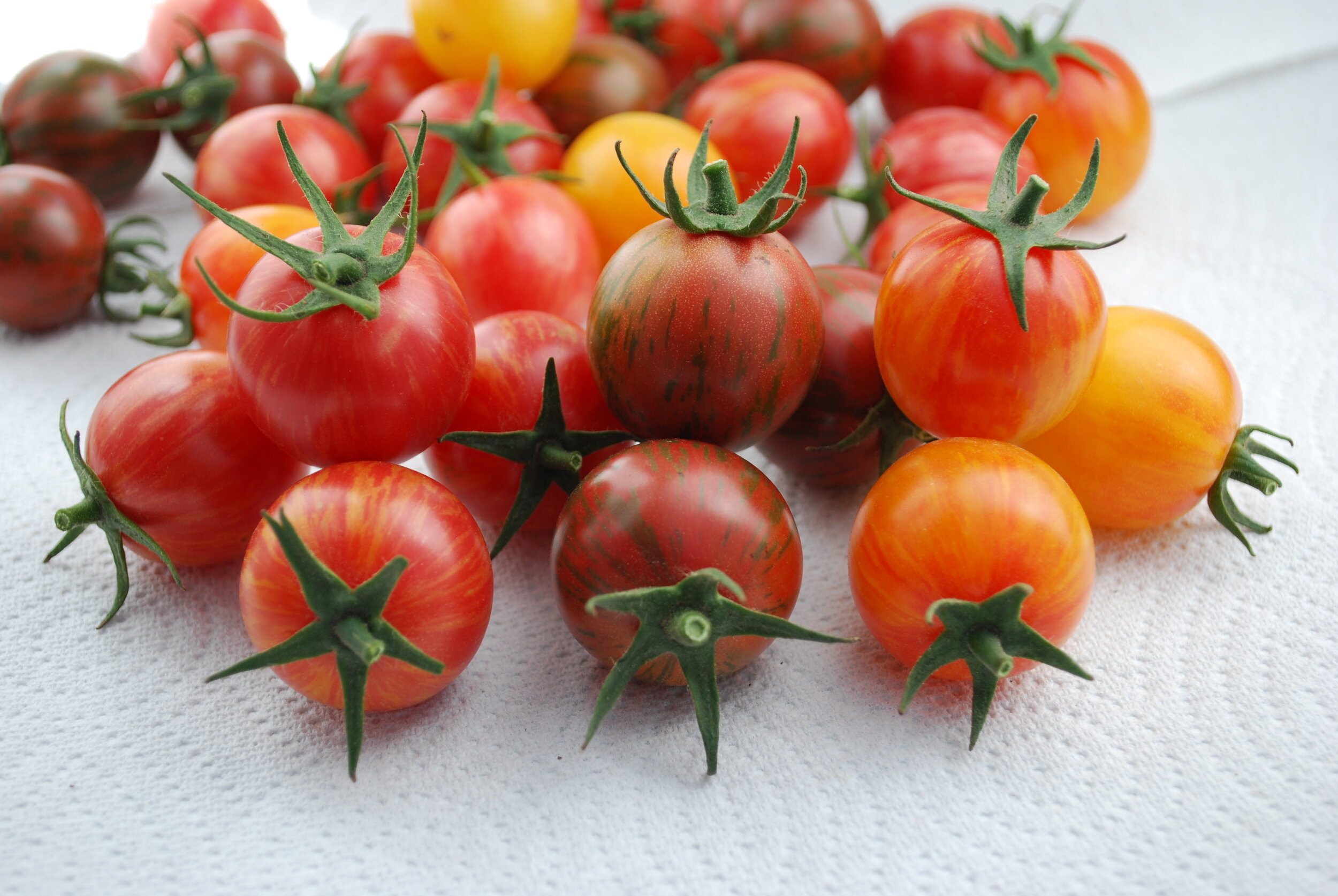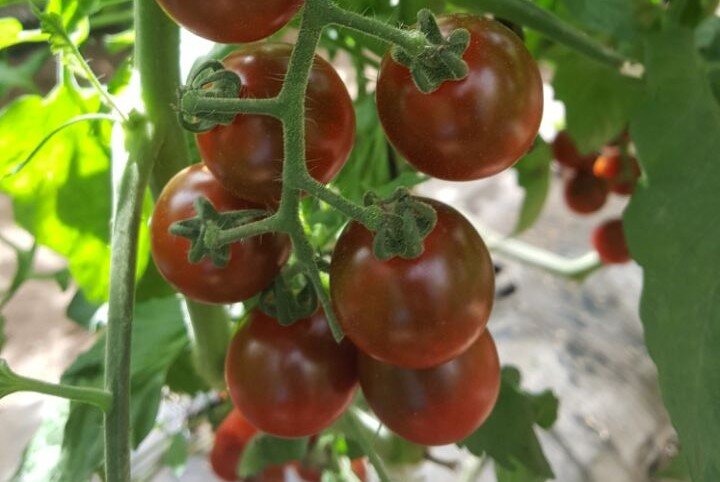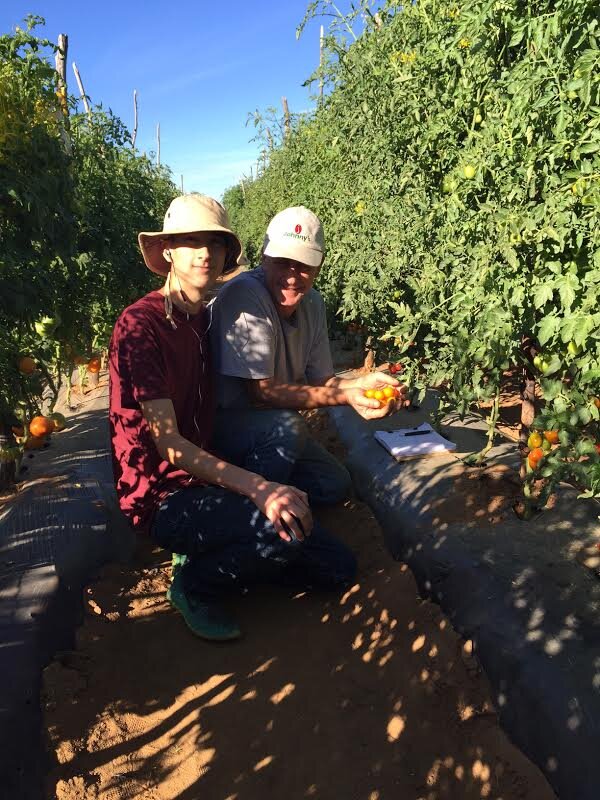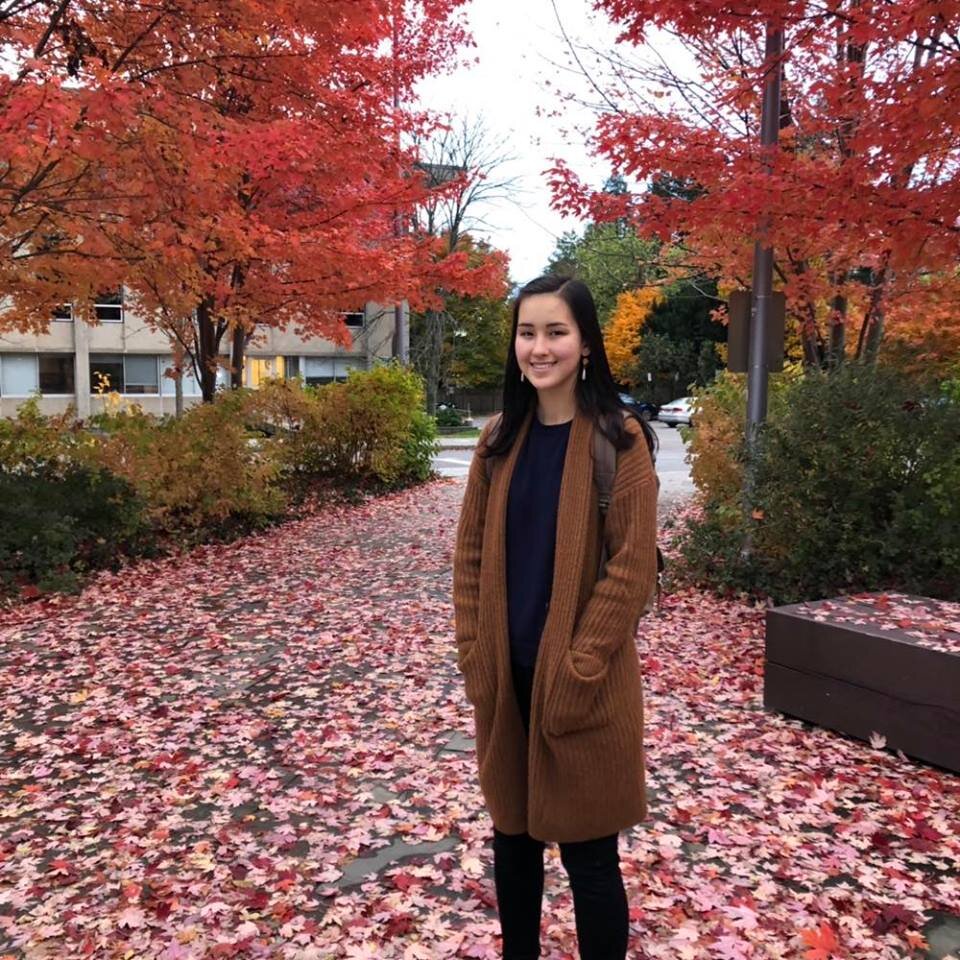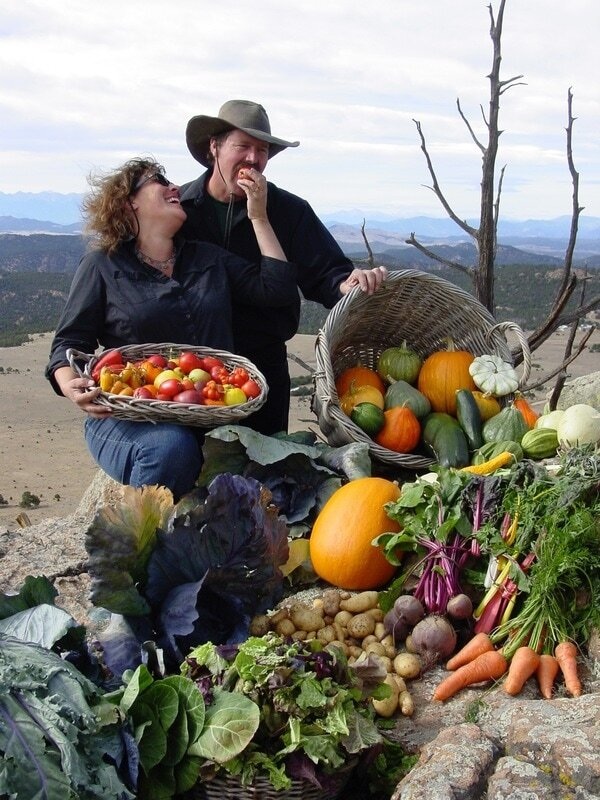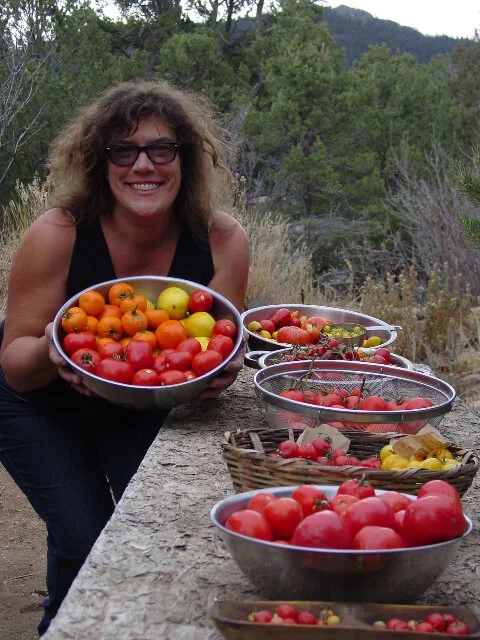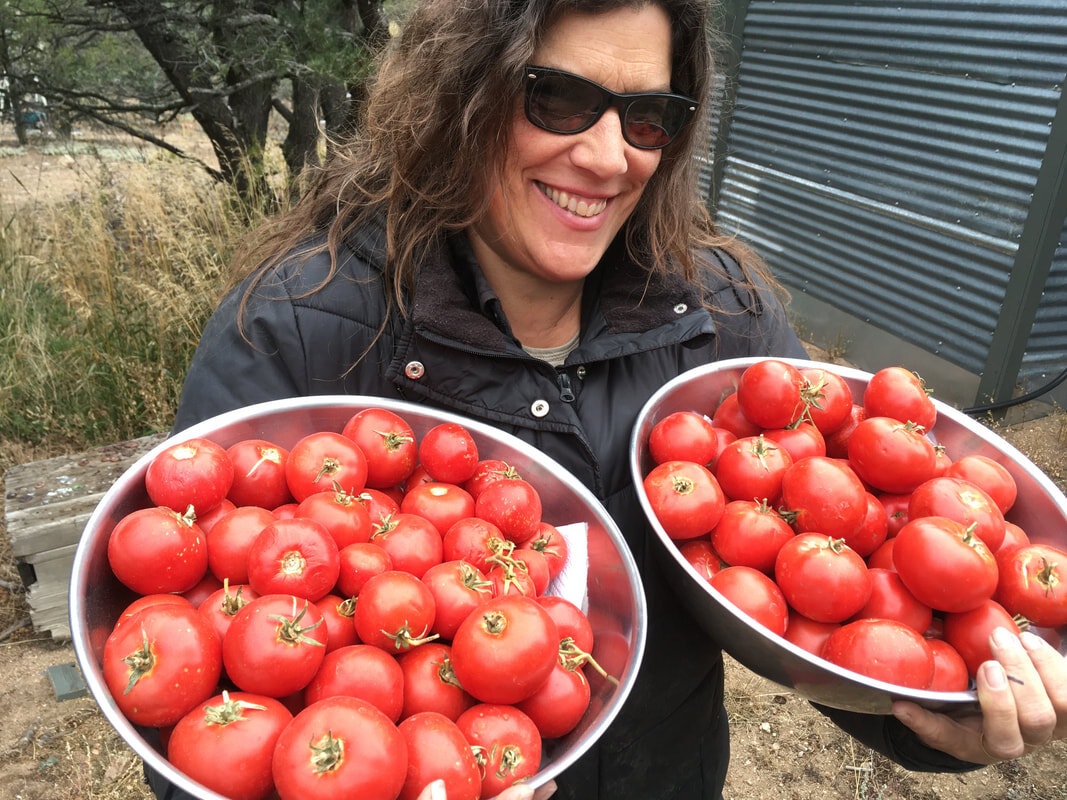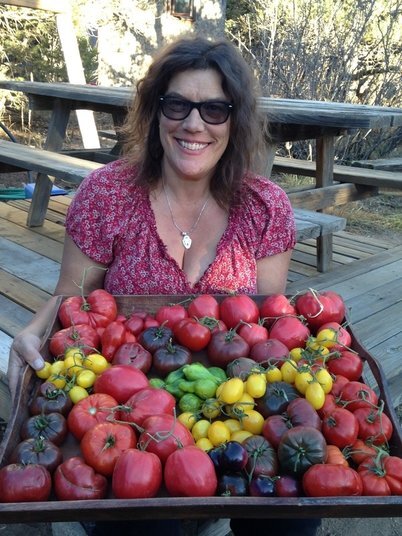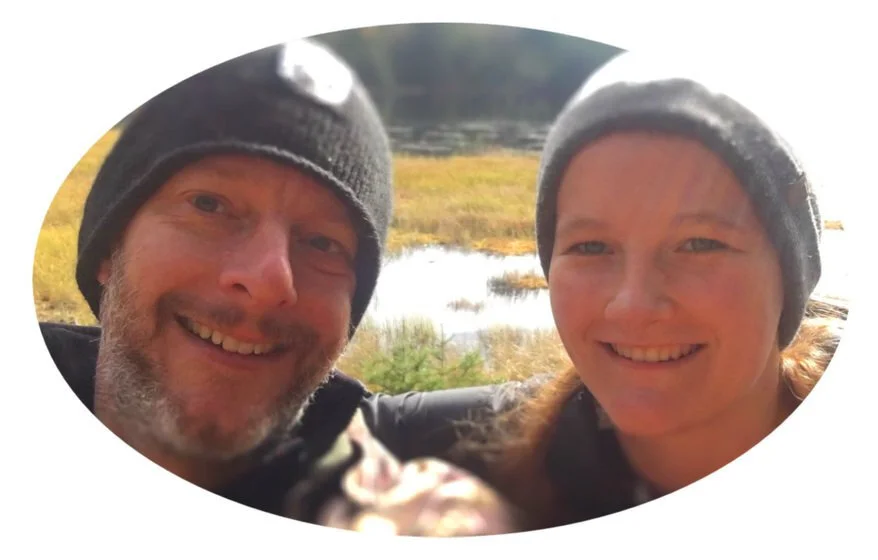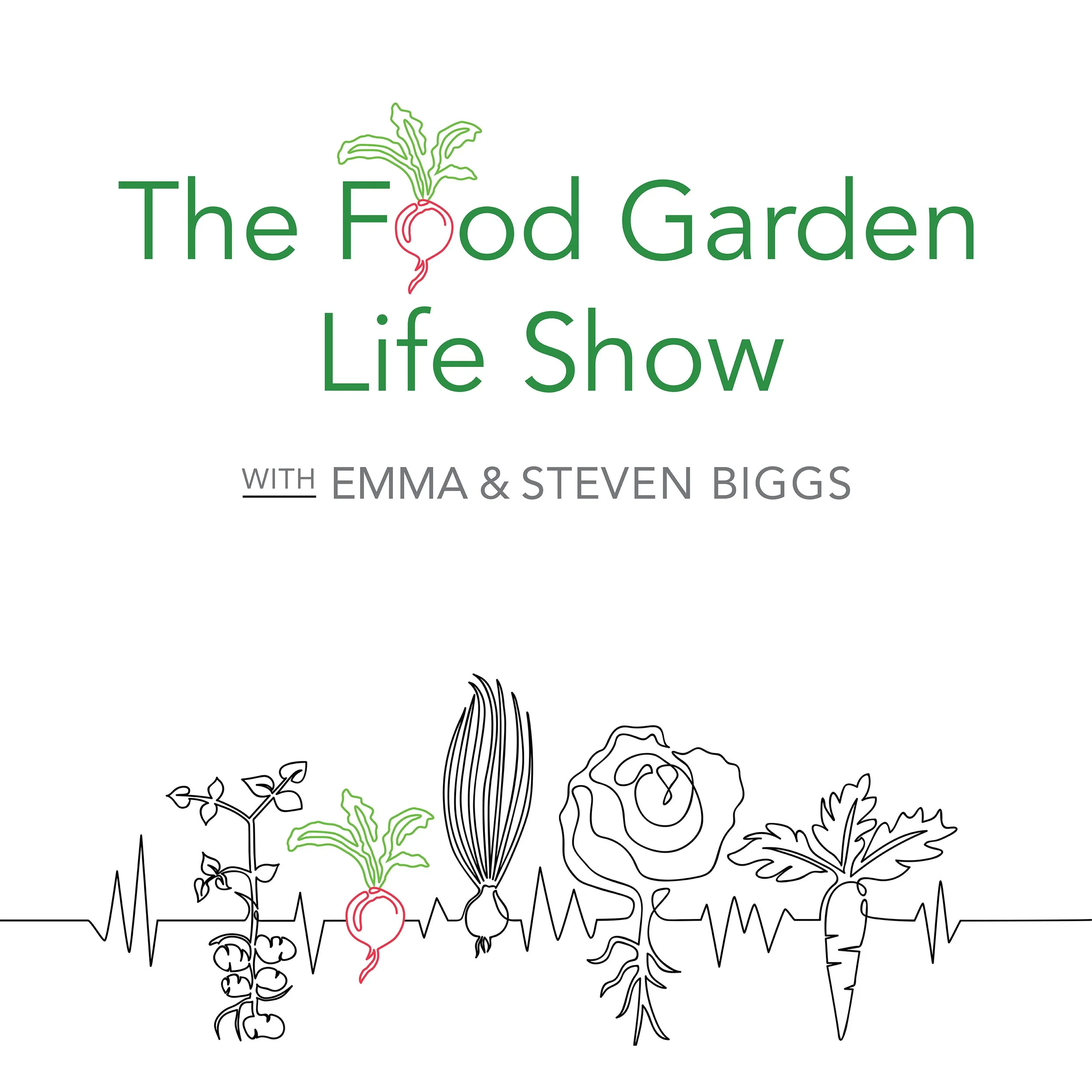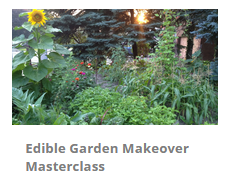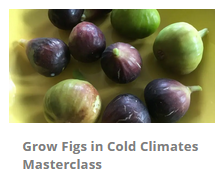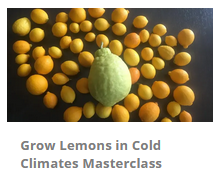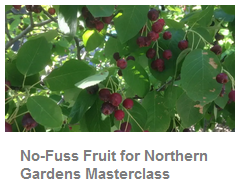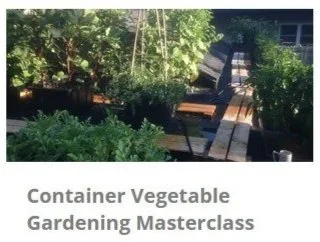Create a “Food Street” with Food Up Front
Kassie Miedema and Mark Stewart
Mark Stewart and Kassie Miedema join us to talk about a grassroots program encouraging people to grow food in front yards.
The idea is to produce more food locally—and to connect people around food.
Participants in the program can also put up a sign in the garden to raise awareness of the idea—and to stir up conversation.
What does success look like? A food street, with many neighbours growing up front.
Food Up Front is an initiative of Transition Toronto, a chapter of a global movement for change.
“The goal being to create a food street.”
Mark Stewart
Growing a Chinese-Style Kitchen Garden
Wendy Kiang-Spray, author of The Chinese Kitchen Garden, joins us to talk about about vegetable crops used in Chinese cuisine, Chinese intensive gardening, and her family’s gardening journey.
Her book weaves together stories and photos from three generations of her family.
While she started gardening as an adult when one of her own daughters asked to grow a garden, Wendy grew up immersed in gardening, in a household where gardening and cooking fresh garden produce was normal. Her father is an avid gardener, and both he and her mother love to cook.
The book includes many of her parents’ recipes for traditional Chinese dishes.
Photos from The Chinese Kitchen Garden

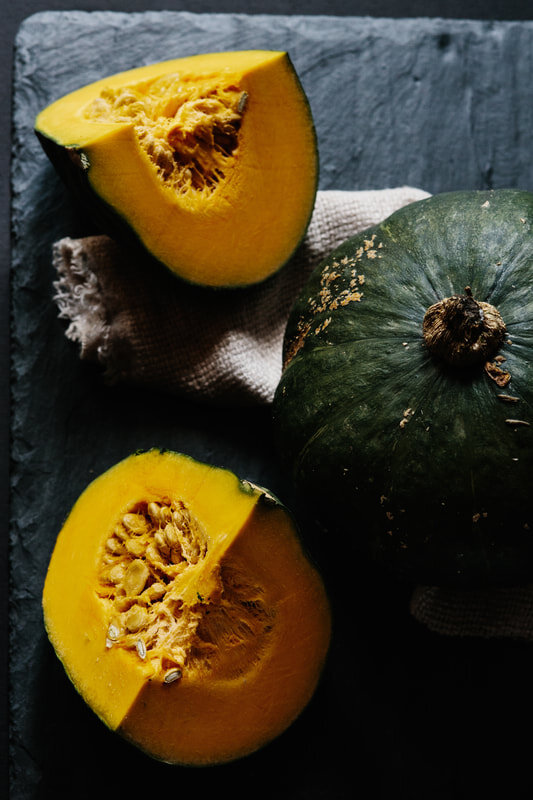
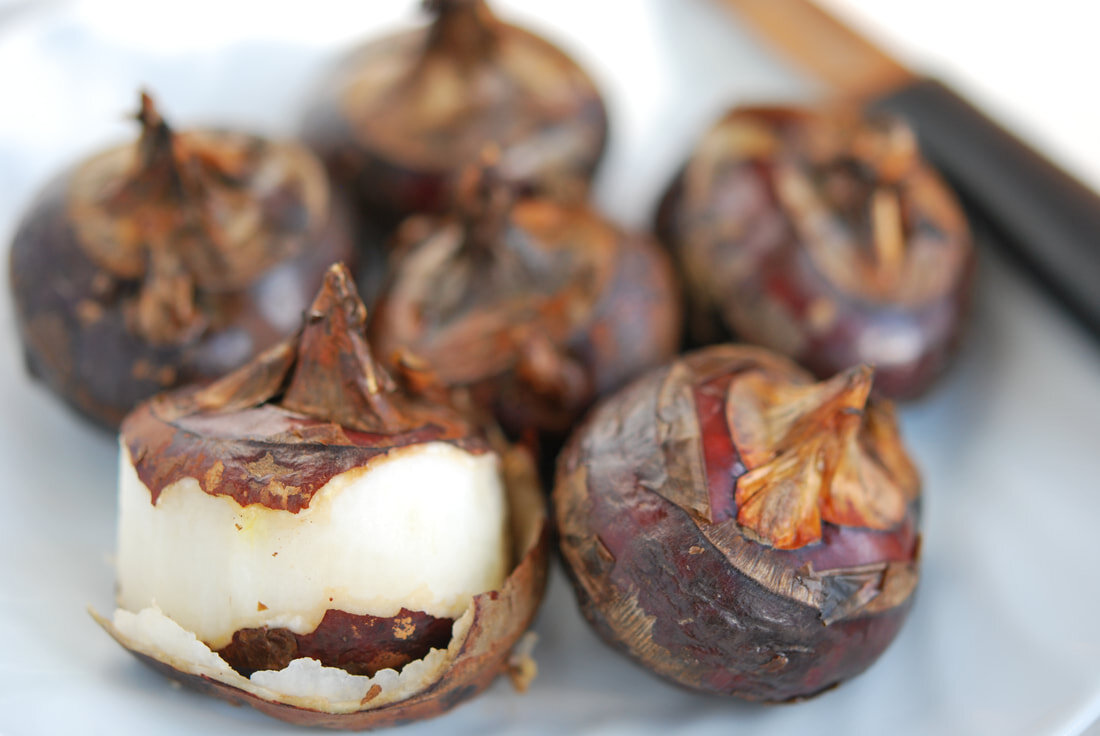
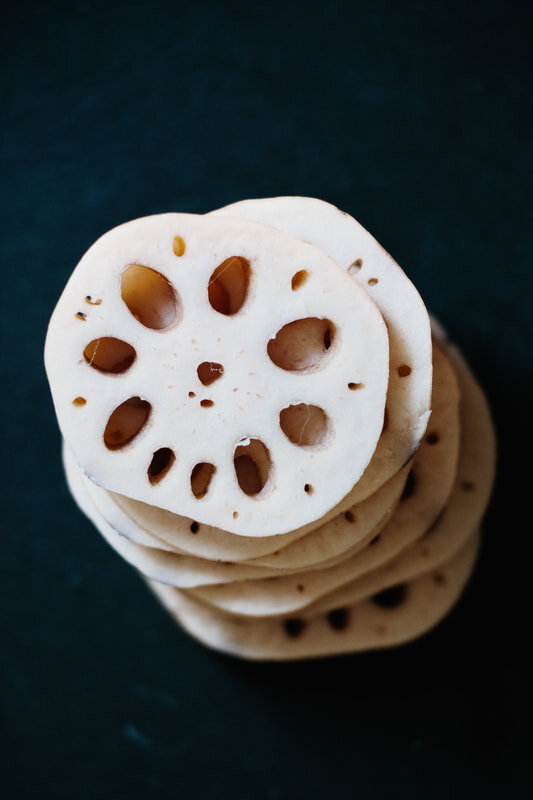
New and Favourite Food-Garden Crops with Niki Jabbour
Niki Jabbour, author of Veggie Garden Remix
We check in with vegetable gardening expert Niki Jabbour in Nova Scotia to find out what’s new in her garden for 2020, and to see what favourites she is growing.
Niki is the author of Veggie Garden Remix, Groundbreaking Food Gardens, and The Year-Round Vegetable Gardener, and the host of The Weekend Gardener radio show.
We find out more about some of the crops in Veggie Garden Remix—and find out some of her other garden favourites.
Ever heard of hodge-podge? It’s an East Coast specialty that sounds delicious!
Gardens and Healing
Stephanie Rose, author of Garden Alchemy and writer and blogger at GardenTherapy.ca.
Stephanie Rose has a passion for inspiring other people to grow and use plants. It’s a passion that began with her own journey of healing herself by taking up gardening.
“This is where I’m going to recover. I’m going to rehabilitate myself using the garden.”
Stephanie is a Vancouver-based award-winning author, speaker, and master gardener who teaches people how to grow and use plants. She weaves her knowledge of herbalism and permaculture into her work.
Using Gardens to Heal
Stephanie talks about her own journey of recovery as she began to garden.
A parent, she has a lot of ideas for parents who want kids to garden. In her own yard, she opted for a play garden instead of a plastic swing set. Her 6-year-old son says that he wants to be a master gardener: When she runs kids gardening events, he likes to lead groups of kids on scavenger hunts.
Garden blogger Stephanie Rose’s latest book, Garden Alchemy.
Garden Alchemy
Stephanie discusses ideas from her new book, Garden Alchemy, which is a guide for gardeners who want to make and do things themselves. The book covers a wide range of topics including fertilizers, soil amendments, sprays, and ideas to beautify the garden.
In the book she demystifies ingredients used to create soil and plant “elixirs.” There are recipes for homemade fertilizers, steps for building a compost pile, soil tests, and techniques for making foliar sprays.
“It’s a recipe book for your garden.”
Raising 70% on a Half Acre
Rob Croley at Sentimental Farm, in Niagara Canada.
Rob and Chris Croley at Sentimental Farm in Niagara, Ontario, Canada grow about 70 per cent of the food they need on their 1/2 acre urban homestead.
An interest in self-sufficiency that started with growing vegetables has grown to include chickens, bees, mushrooms, goats, preserving, and making soaps and cosmetics.
They know that their garden is more than some people will undertake, but they hope that people who visit their garden will see something that inspires them to produce food at home.
Saving Seeds and the Stories Behind Them
Seed saver, author, and educator Ben Cohen
Ben Cohen, the author of Saving Our Seeds, joins us to talk about seed-saving, seed libraries, and the importance of community seed-sharing programs.
An author, herbalist, gardener, and educator, Ben farms with his family in Michigan.
They started Small House Farm when they realized that they wanted to to slow down and live a more simple life.
Ben is the founder of the Michigan Seed Library, a seed sharing initiative that has helped set up 70 seed library programs.
A Mission to Turn Lawns into Food Gardens
Linda Borghi from Farm-A-Yard joins us to talk about how she got into growing food, her first farm, her move into SPIN-Farming (small-plot-intensive), and her current work in communications with her Farm-A-Yard project.
“I am a biodynamic, spin-farming, podcasting grandmother.” Linda Borghi
Her mission is to teach others how to grow so that they can turn lawns into food gardens. To achieve this, she connects people with skills and information to help them succeed growing. Coming from a business background outside of agriculture, Borhi has a strong interest in the business side of growing—and is keen to challenge accepted practices.
No-Dig, No-Weed, No-Bend Gardening
Straw-Bale Gardening
Ever thought it would be nice to find a gardening technique that would eliminate the need for weeding, digging, and bending?
Or make it possible to grow vegetables where it is otherwise difficult?
Horticulturist Joel Karsten, a pioneer of the straw-bale gardening technique, talks about the concept of straw-bale gardening. He explains how it works, where it can be used, and how to make it work well.
Karsten, who grows vegetables in a 24-bale garden on his small residential property in Minnesota, grew up on a farm seeing healthy weeds growing in old, broken straw bales. When he bought his first house and decided to make a vegetable garden, he couldn’t—there was too little soil.
That’s when Karsten recalled the bales he had seen growing up on the farm. He began to experiment.
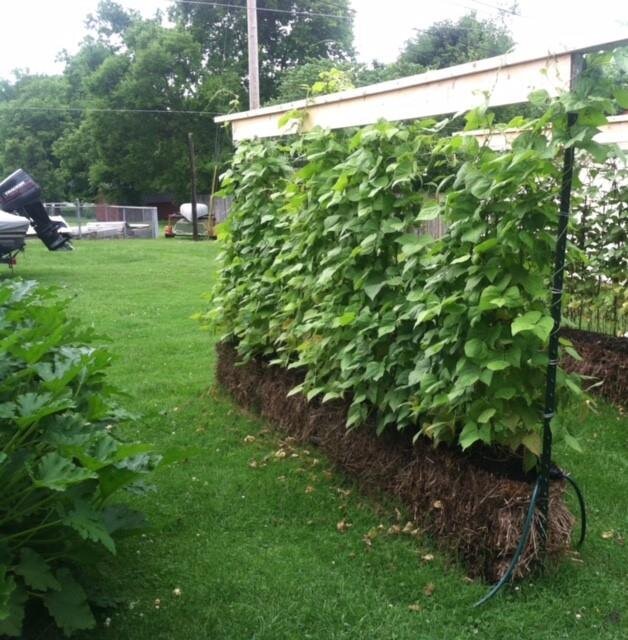

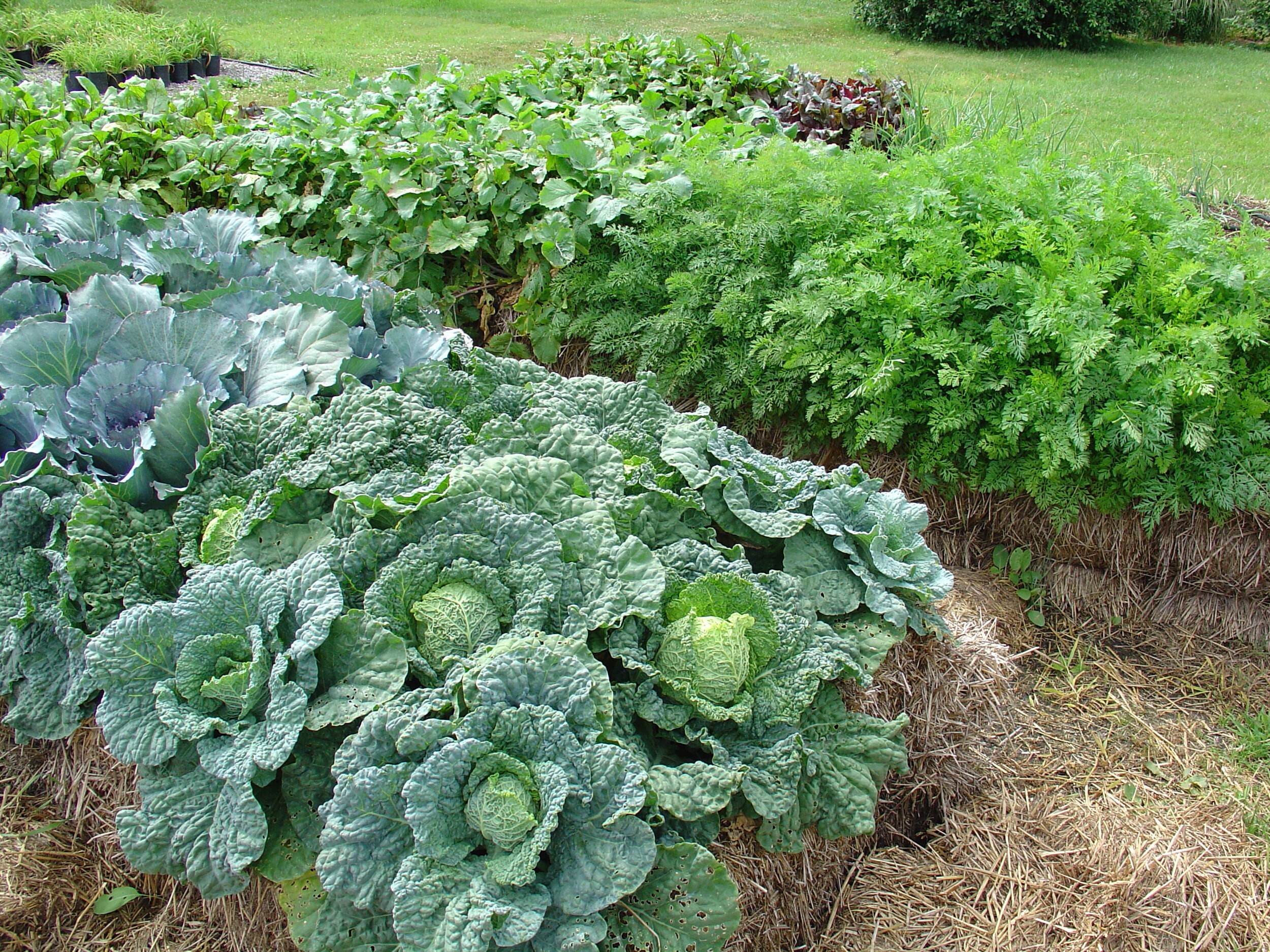
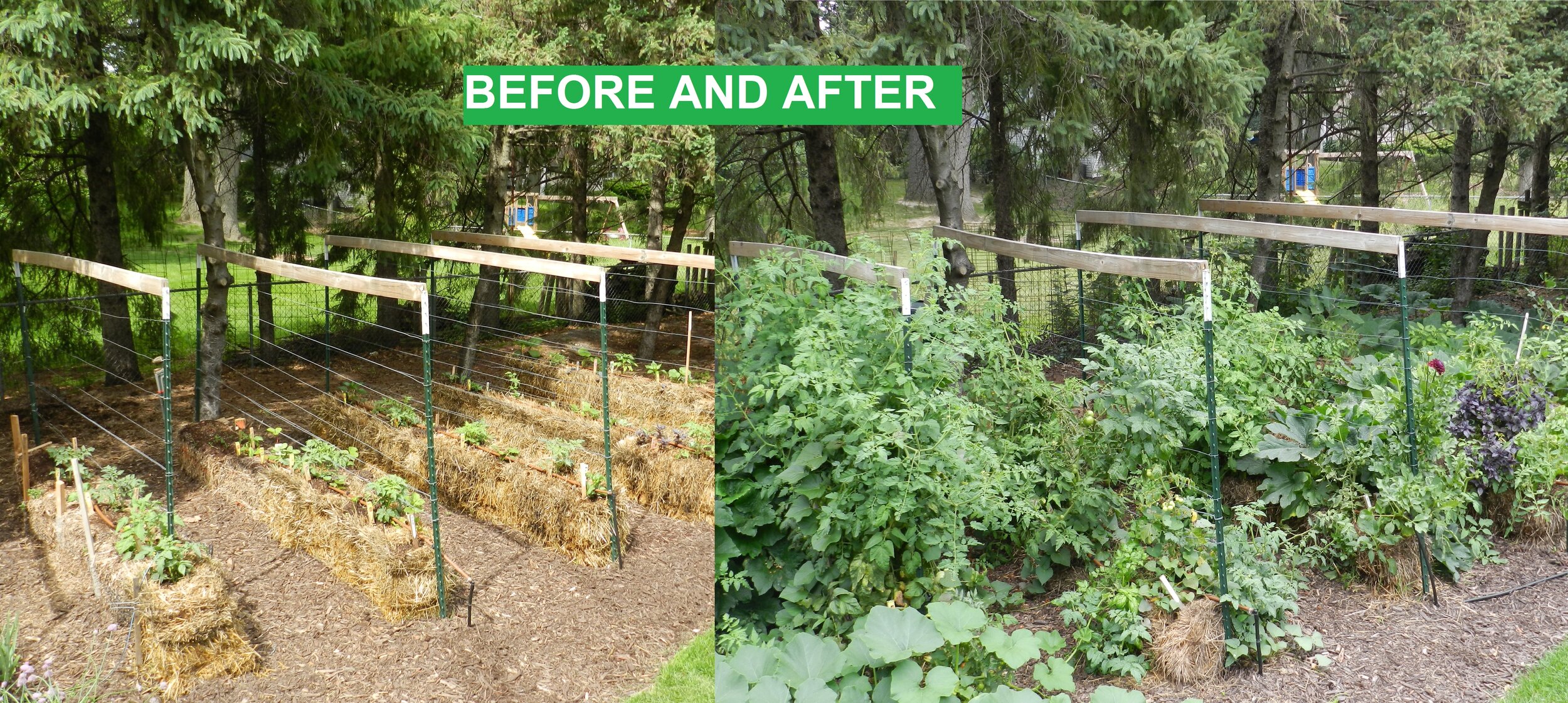

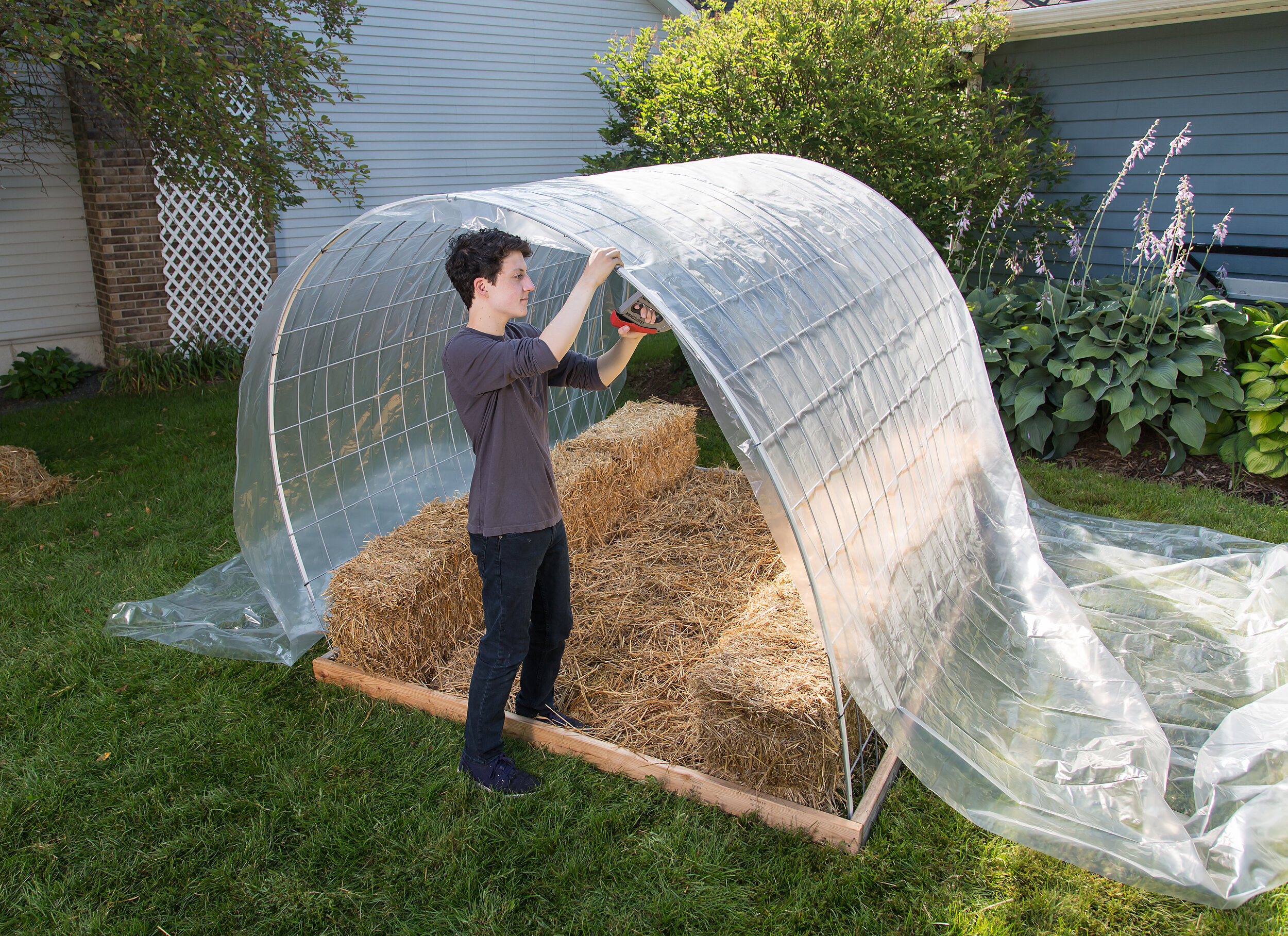
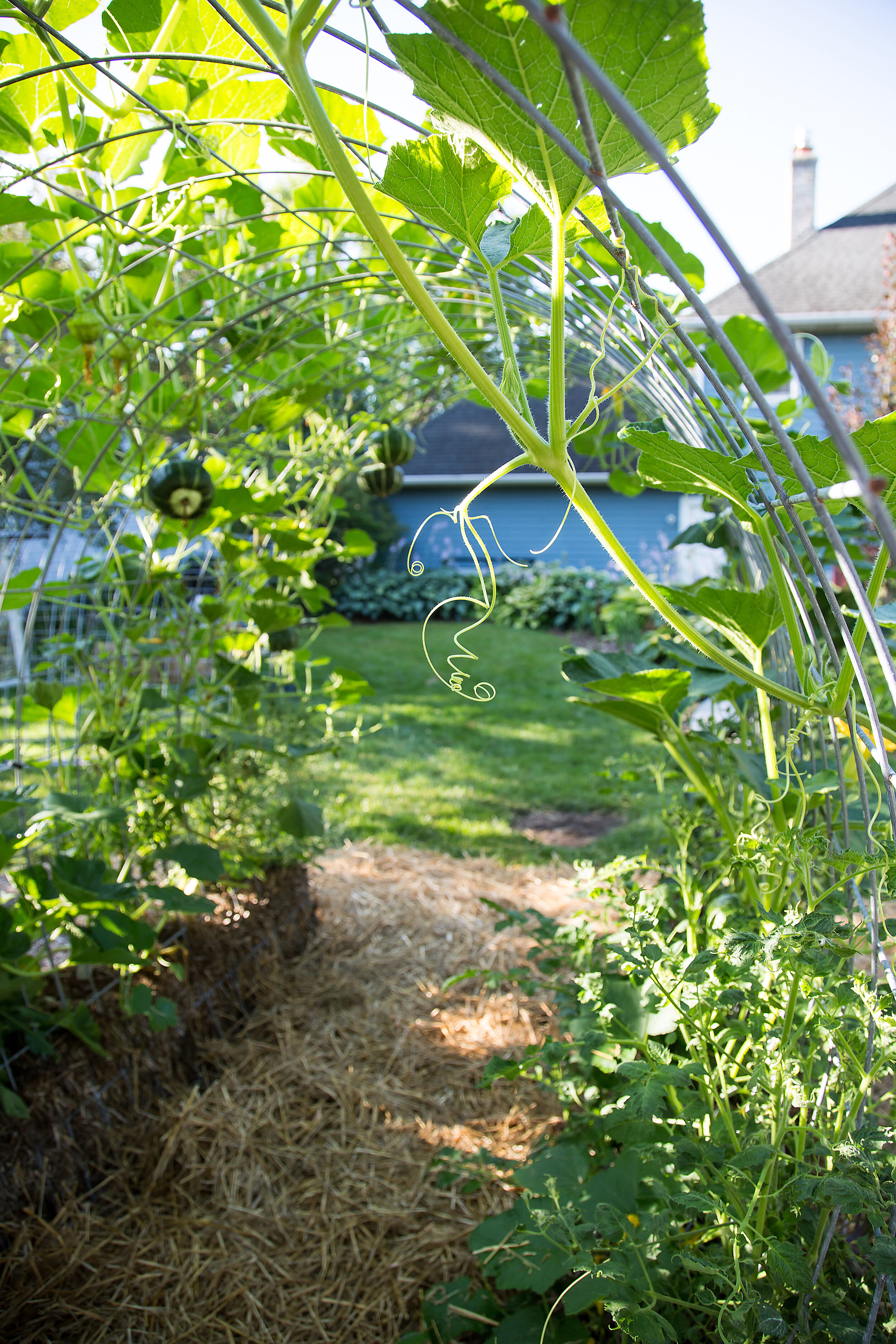
How to Grow in Straw Bales
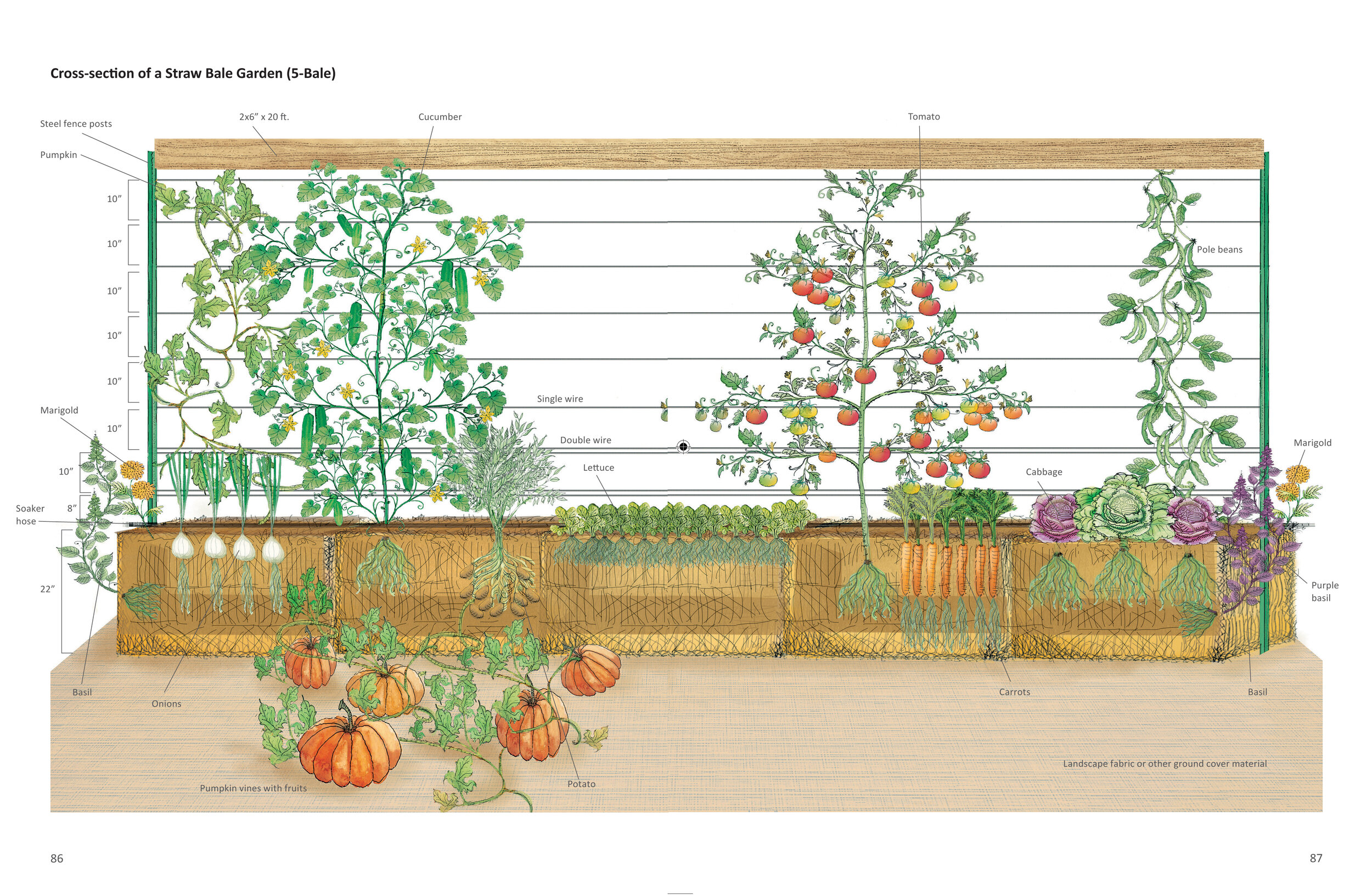
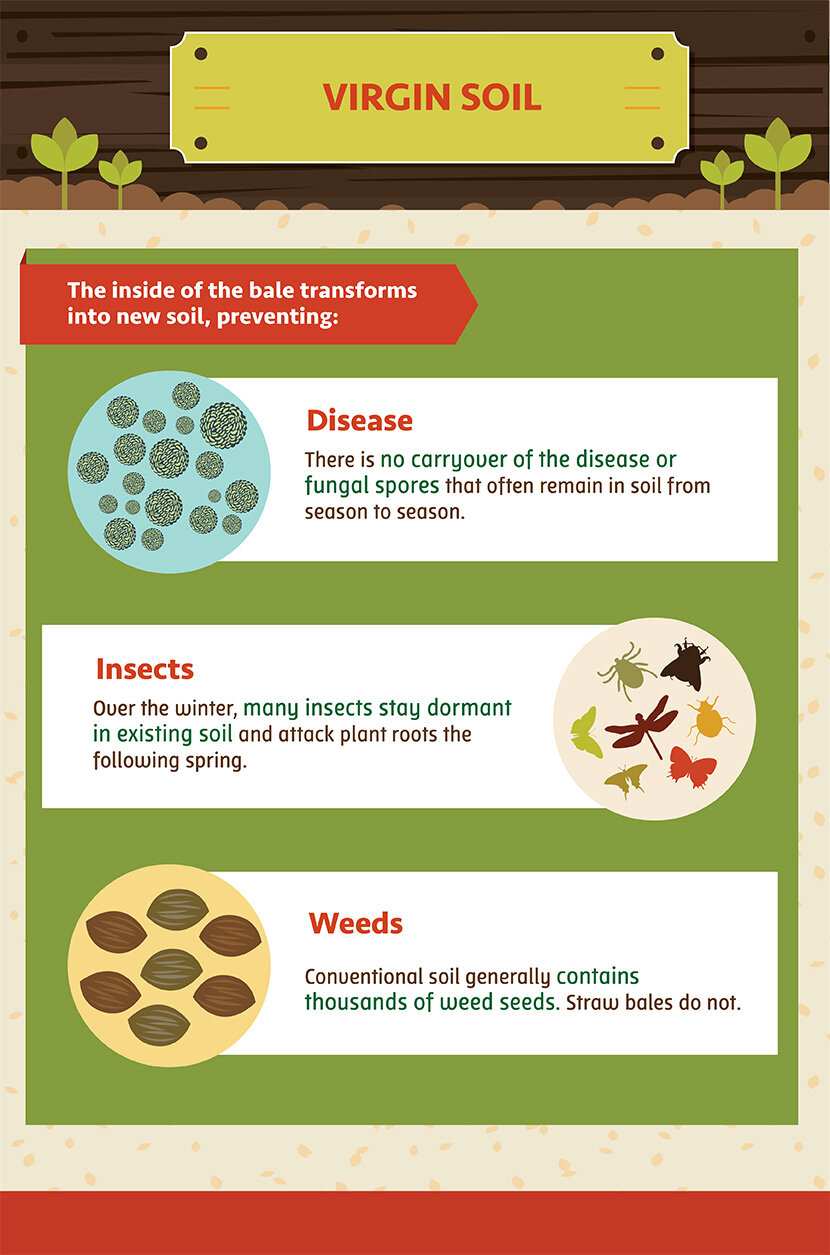
Joel Karsten’s TEDx Talk About Straw-Bale Gardening
Farm the City, Garden with Grains
Farm the City
Our first guest is farmer, author, and food system activist Micheal Abelman.
Michael is a visionary of the urban farming movement. In addition to his family farm on Salt Spring Island in British Columbia, he’s the co-founder and director of Sole Food Street Farms in Vancouver, an urban agriculture business that provides employment to people managing poverty and addiction. The farm covers 4 acres of land, producing 25 tons of food annually.
The author of many books, his most recent book is Farm The City: A Toolkit for Setting up a Successful Urban Farm.
The book, a tool kit for food activists, shares ideas about setting up and operating an urban farm including finding land, choosing crops, marketing and fundraising, and community engagement.
Gardening with Grains
In the second half of the show, we chat with horticulturist and foodscaping expert Brie Arthur about her new book, Gardening with Grains.
Brie is an advocate of including food plants in the landscape, and a proponent of planting edibles within traditional ornamental landscapes.
Brie gives advice for growing grains from planting to harvest. Ever thought of growing barley? It gives a whole new meaning to the term “beer garden!”
Brie previously joined us on the show to talk about her book The Foodscape Revolution.
Hens, Hay, and How to Cook Cardoon
Food writer Signe Langford joins us from Port Hope, Ontario to talk about her passion for growing food, her food garden, cooking, and how her garden connects her with her community.
Hay
A fan of straw-bale gardening, Signe talks about how she experimented last year using bales of alfalfa hay instead of straw bales. Hay is normally NOT recommended for the straw-bale technique because all of the grass seeds within can make a bale look like a big chia pet. Signe tells us how that went. She was pleased with the results.


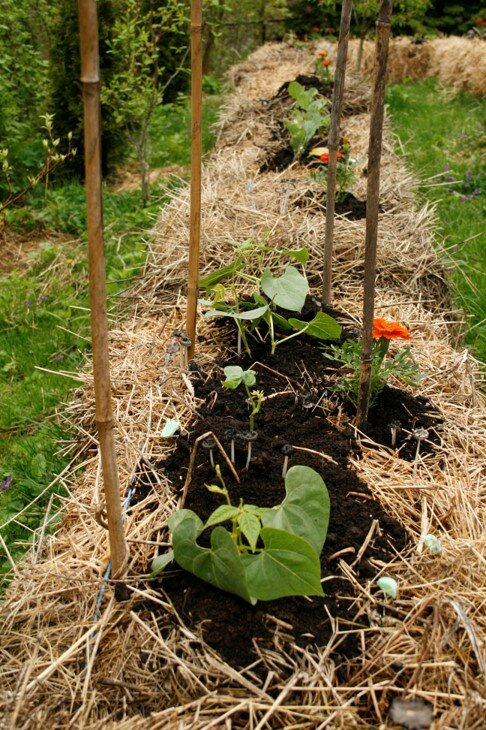

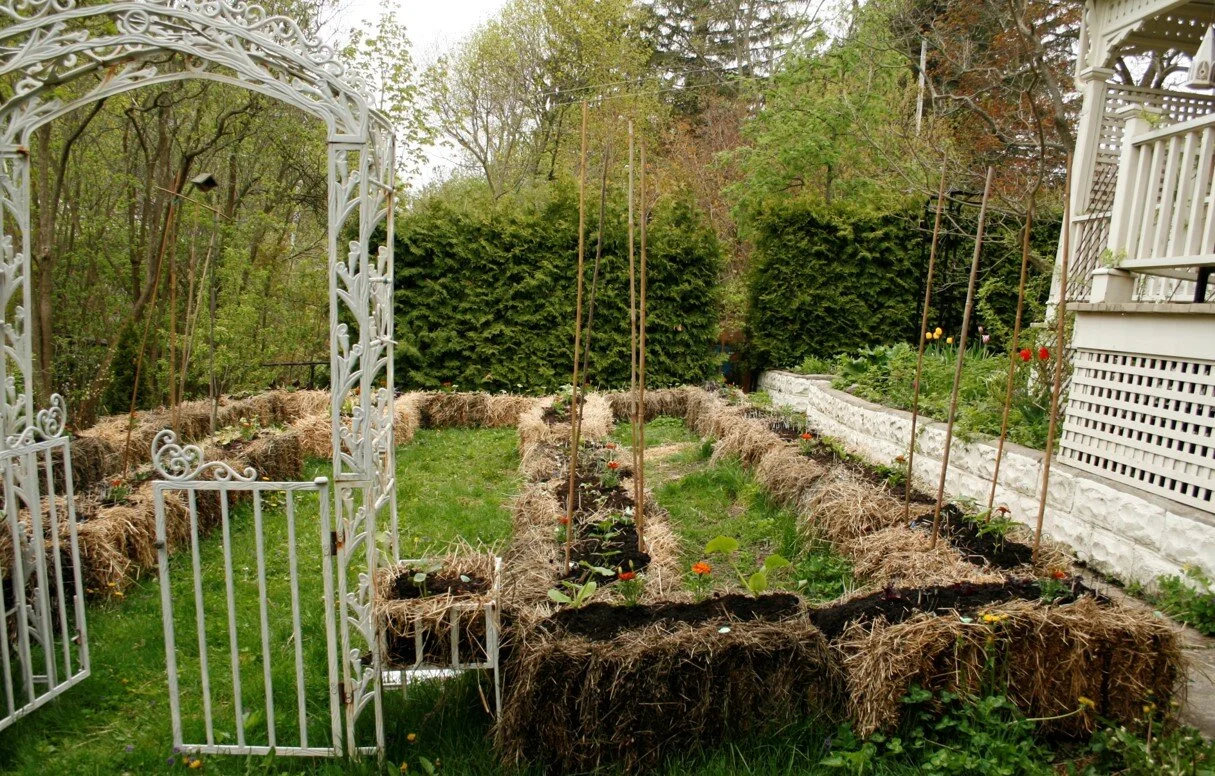
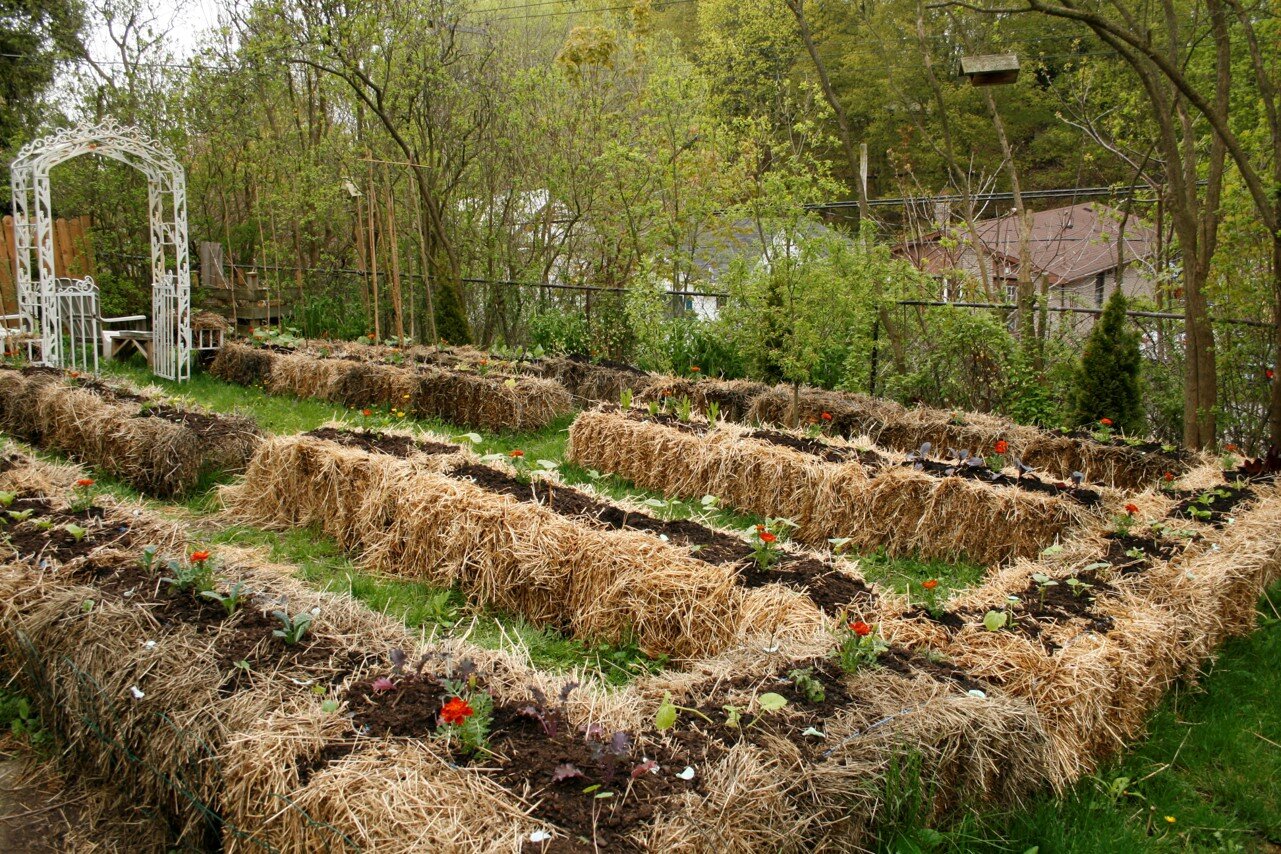
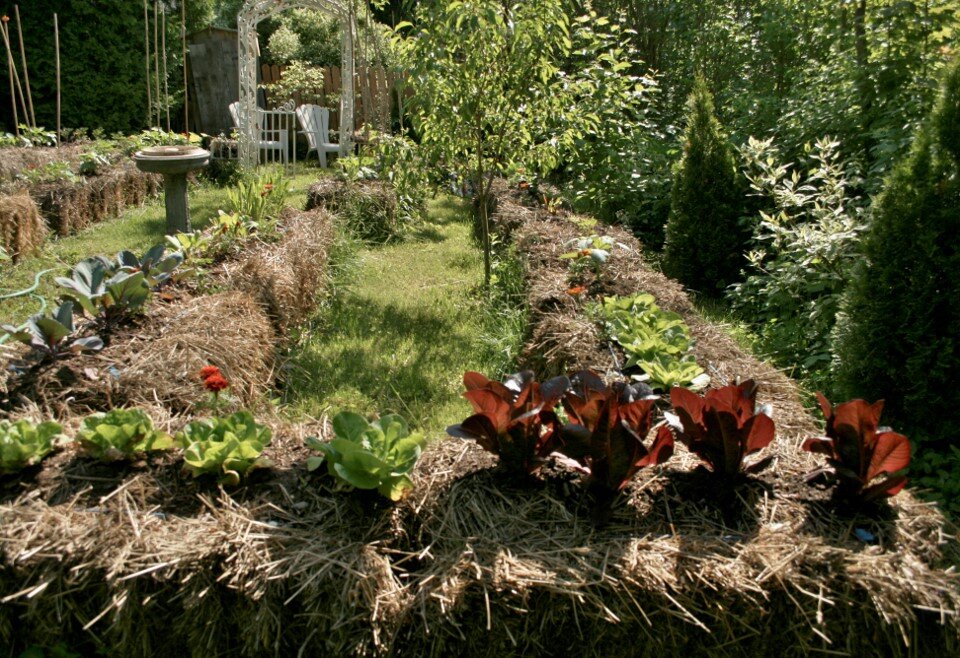

Hens
Signe is the author of Happy Hens & Fresh Eggs: Keeping Chickens in the Kitchen Garden.
The author of the book Happy Hens and Fresh Eggs: Keeping Chickens in the Kitchen Garden, Signe considers chickens to be, “a symbiotic member of the garden.”
She talks about common myths such as noise and smell that she often hears.
Cooking
Signe talks about edible weeds and edible native plants—and her love of the dandelion.
Signe also helps Steven with cooking advice for cardoon, explaining how to make Cardoon Gratin.
Choose The Right Tomato Varieties
Choose the right tomato variety for your garden
With more than 10, 000 known varieties, how do you choose which tomato to grow? Host Emma Biggs talks about things to consider when choosing tomato varieties for your garden.
Emma talks about:
Days to maturity (DTM)
Growth habit
Fruit Type
Flavour
Appearance
Disease resistance
Seed type
Did you know that Micro dwarf varieties are about 6-12 inches tall, while dwarf varieties stay between about 2-4 feet?
If you’re interested in reading more about things to consider when choosing a tomato variety, visit Emma’s blog post, which talks about DTM, growth habit, fruit type, flavour, appearance, disease, and seed type.
More on Tomatoes
Sandy Soil and a Greenhouse on Vancouver Island
Gardening on Sand on Vancouver Island
Donna Balzer gardens on Vancouver Island, Canada.
Meet Donna Balzer, a Vancouver Island food gardener.
Donna tells us about gardening on her very sandy soil, talks about how she uses a greenhouse to harvest year-round, and shares some of her favourite crops.
As well as being an avid gardener, Donna is a horticulturist, garden journalist, and broadcaster. She co-authored No Guff Vegetable Gardening with Steven in 2011.
Donna has a passion for soil and soil biology, and loves teaching other people about it.
Get more food gardening tips from Donna on her blog and podcast, at DonnaBalzer.com.
Artistic Front-Yard Garden, Anti-Inflammatory Food, Grow Luffa
Shawna Coronado’s front-yard vegetable garden
Food Garden Life is a show about pushing garden boundaries. If you’ve tuned in before, you might notice the change in the show name. With this episode we celebrate 2 years on the air. WHY THE NAME CHANGE? As we looked through past interviews, we realized that we invite mostly people who grow food and edible plants. To celebrate that focus, we’re calling the show Food Garden Life.
Artistic Front-Yard Veg + Anti-Inflammatory Food
Our first guest is garden and wellness expert Shawna Coronado from Arizona. Shawna is a garden expert and the author of 8 books. She brings together gardening and healthy eating. Shawna talks about getting community buy-in for her front-yard vegetable garden—and about making that garden a work of art.
Her most recent book, Stacked with Flavor: An Anti-Inflammatory Cookbook with Dairy-Free, Grain-Free & Low-Sugar Recipes, was inspired by her struggle with severe degenerative osteoarthritis. When Shawna found herself crippled by the condition, yet not satisfied with the idea of living the rest of her life on pain killers, she tried changing her diet as a last-ditch effort. This book shares that journey along with practical, flavourful cooking ideas. Shawna gives a practical look at how to undertake an anti-inflammatory diet.
Beautiful Luffa: A Guide and Workbook for Growing, Using, and Enjoying Sponge Gourds
Grow Luffa
In the second part of the show, we chat with natural beauty products expert Janice Cox about growing luffa (a.k.a. loofah). Hear about using luffa for personal care, as a natural sponge, to hold water in flower pots, for arranging flowers—and to eat! Janice talks about 3 key things to give your luffa plants: sun, support, and pollinators.
Janice found that when she gave talks about natural beauty products, she always had a lot of questions about luffa—so she wrote a book about it, called, “Beautiful Luffa: A Guide and Workbook for Growing, Using, and Enjoying Sponge Gourds.”
Luffa aegyptiaca is the type of luffa most often offered for sale at seed companies; it is quite fibrous, making it suitable for a strong scrubbing sponge (it is also known as Egyptian cucumber.) Luffa acutangula is the best bet for eating.
In Emma’s Tomato-Talk segment she chats with Hanna Jacobs from Matchbox Garden & Seed Company in southern Ontario about some of Hanna’s favourite tomatoes.
In the Biggs-on-Figs segment, Steven chats with Will Pananes from south-central Pennsylvania about his innovative use of a heat column to overwinter fig trees. Look at the 2015 blog post titled, “Making a Heat Column for In-Ground Fig Plants.” There will be more photos to come from Will in fall 2020…stay tuned to the blog!
“You have to be a little crazy!”
Will Pananes talking about finding ways to grow figs in cold climates
Heat Column to Protect Figs
An Innovative Overwintering Idea
A heat column for overwintering figs
Excerpt from The Garage Gardeners Radio Show, March 2020
In The Biggs-on-Figs segment, Steven talks with Will Pananes, a fig grower in Pennsylvania who uses heat column to protect his figs over the winter.
Garden Financial Literacy, Rooftop Edible Gardens, Tomatoes with Stories
Gardening and Financial Literacy
Our first guest is Ciara Byrne from Nevada. She tells us how the organization Green Our Planet is training a generation of student “farmpreneurs.” Students operate farmers markets at schools—and, twice a year—there is a giant market with students from many schools setting up in one location. The next market will have over 700 fifth-grade students selling fruit and veg from school gardens.
Ever thought that financial literary could be taught alongside gardening? Green Our Planet uses markets as an opportunity to teach more than gardening: they are an opportunity to discuss customer service, negotiating skills, and marketing.
Ciara is a documentary film maker who, in 2013, found herself working in Nevada. Green Our Planet was set up to use filmmaking as a crowdfunding platform for green projects. When Green our Planet successful funded a school garden project, Ciara saw the opportunity to help many more schools.
Green Our Planet has helped develop Nevada’s first STEM garden curriculum for schools (science, technology, engineering and mathematics). Green Our Planet is now growing gardeners and entrepreneurs beyond Nevada. Ciara’s work was recently honoured by the Obama foundation.
“Making school fun is critical.”
Rooftop Food Gardens
In the second half of the show, we chat with Hilary Dahl from the Seattle Urban Farm Company. She combines a background in landscape architecture and urban planning with her passion for creating edible gardens.
Hilary has recently been involved in some inspiring rooftop garden projects in the Seattle area. One of these is the Amazon campus, where a collaboration with a not-for-profit organization means that food harvested from the rooftop garden is used for culinary training for community members.
Hilary explains that the building of many new multifamily dwellings in Seattle has given her the opportunity to be involved in a number of edible rooftop garden projects. She talks about rooftop challenges, and also considerations such as weight and irrigation.
Hilary shares another interest with us: broadcasting. She hosts a fantastic podcast about edible gardening called Encylopedia Botanica.
“Every design I did had some sort of food element.”
Visit the Seattle Urban Farm Company website for more information.
Tomato Talk Segment
In the Tomato-Talk segment, Emma chats with Colette Murphy from Urban Harvest seeds about tomato varieties with a story.
Urban Farming to Build Community
Zawadi Farm
Our in-studio guest is Jessey Njau, who left a corporate job to farm his Toronto backyard. Originally from Kenya, Jessey explains that the name of his farm, Zawadi, means “gift” in Swahili.
His motivation to change careers stemmed from a desire to refocus on family and community. He talks about the relationships he has grown and the generosity he has encountered. Jessey sees food production as a powerful opportunity for social change. “The regenerative context means a lot to me,” he says.
“I love it! My blood boils if I’m not in the land”
As Jessey enters his fourth year of growing, his operation has grown to include more yards, as neighbours see what he is doing and offer him their yards.
“I’m close to having about a quarter acre collectively of backyards”
But it hasn’t all been easy. When first selling at a local market, many people said, “I can find this produce cheaper.” Not sure how to handle the price objection, Jessey remembered the advice of a friend, who told him that to succeed in business, “you need to be crazy.” He decided to be crazy—to break the rules—and sent shoppers home with free vegetables, saying, “Talk to me when you come back next time.” When those shoppers came back, they didn’t talk about price any more. “Once they tasted it, they flew,” he says.
“He was rejuvenating a city by growing food”
Jessey Njau talking about inspiration he felt after Michael Abelman’s book, Street Farm: Growing Food, Jobs, and Hope on the Urban Frontier
Tomato Talk Segment
In Emma’s Tomato-Talk segment, she describes some of her favourite tomato varieties that she has written about in her Harrowsmith Magazine blog.
”It looks like a brain…or a whole bunch of cherry tomatoes fused together.”
Broadfork Dance
Do you use the broadfork? Check out Jessey’s video below…maybe you can help with his project.
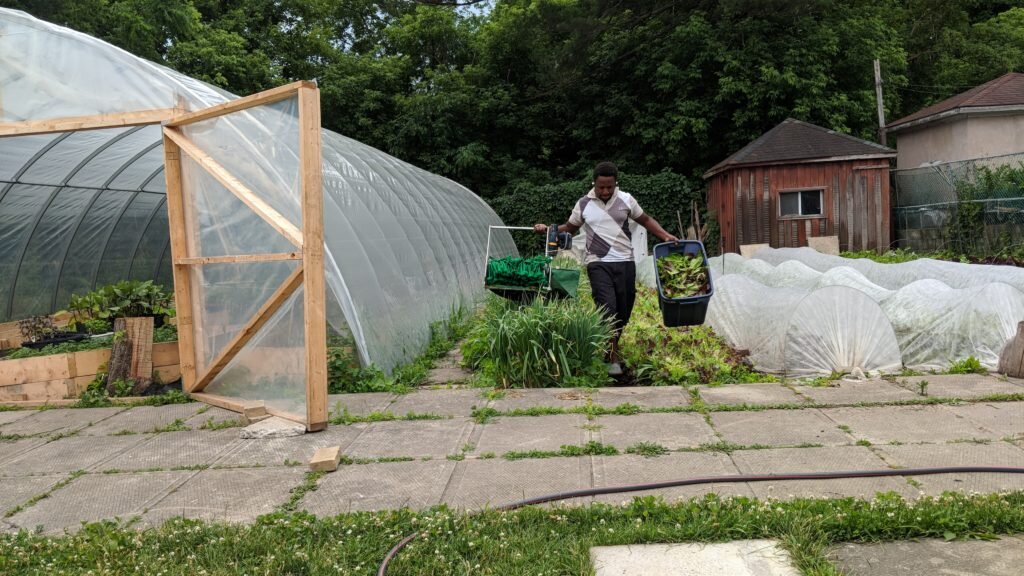
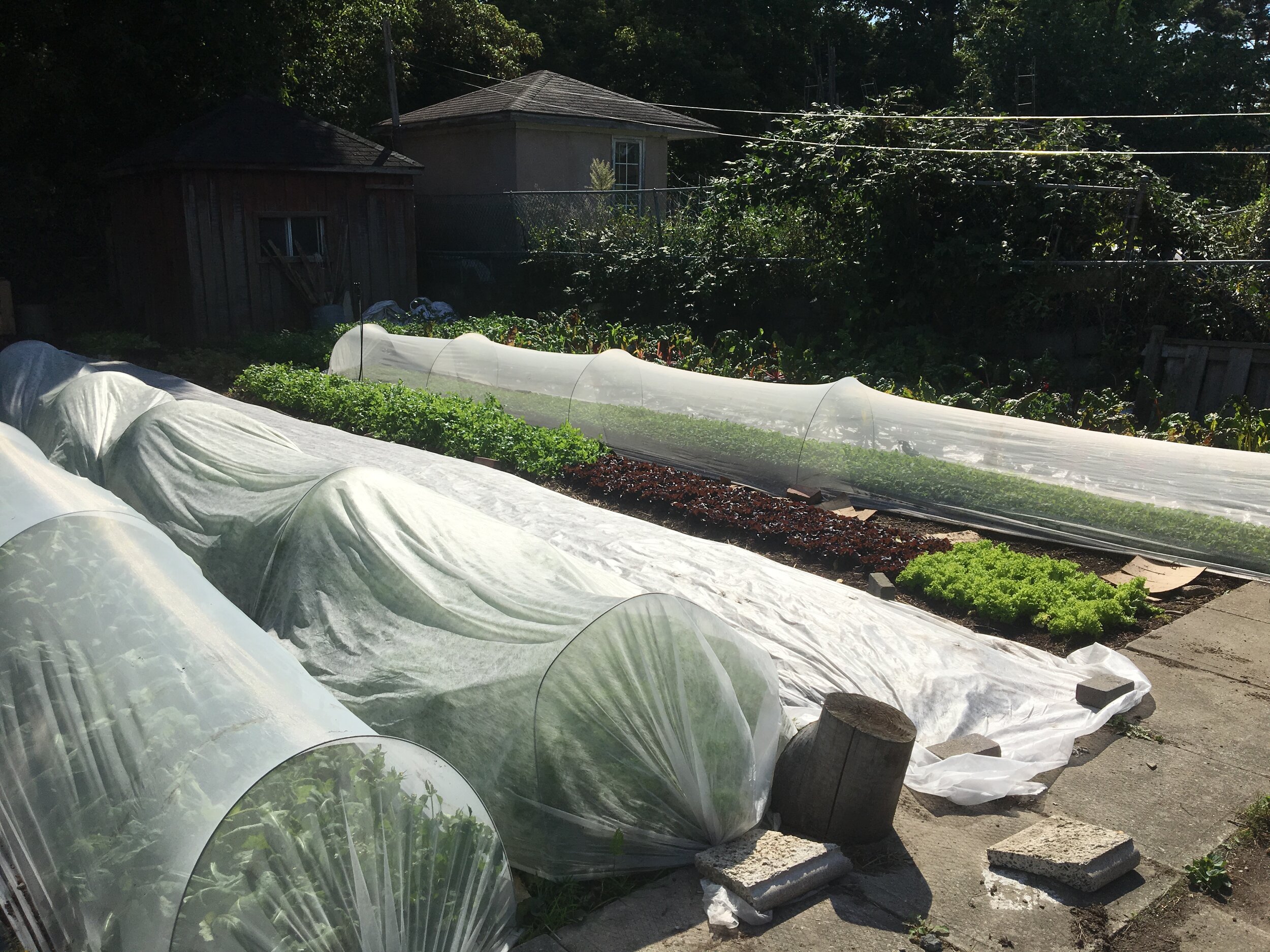
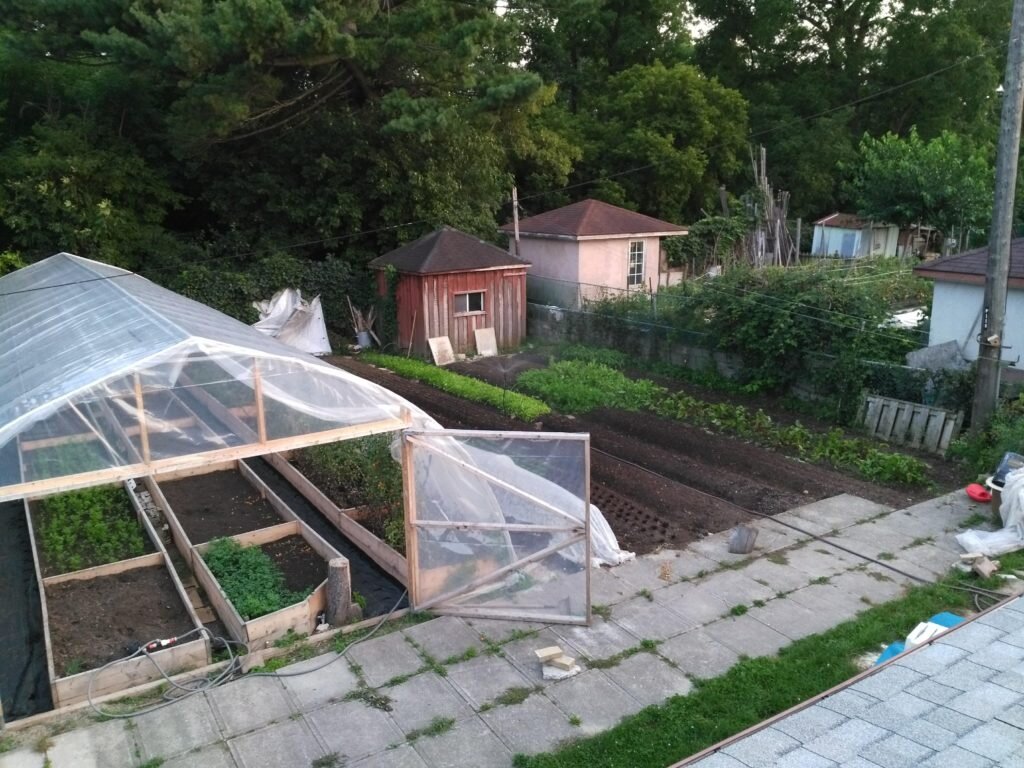
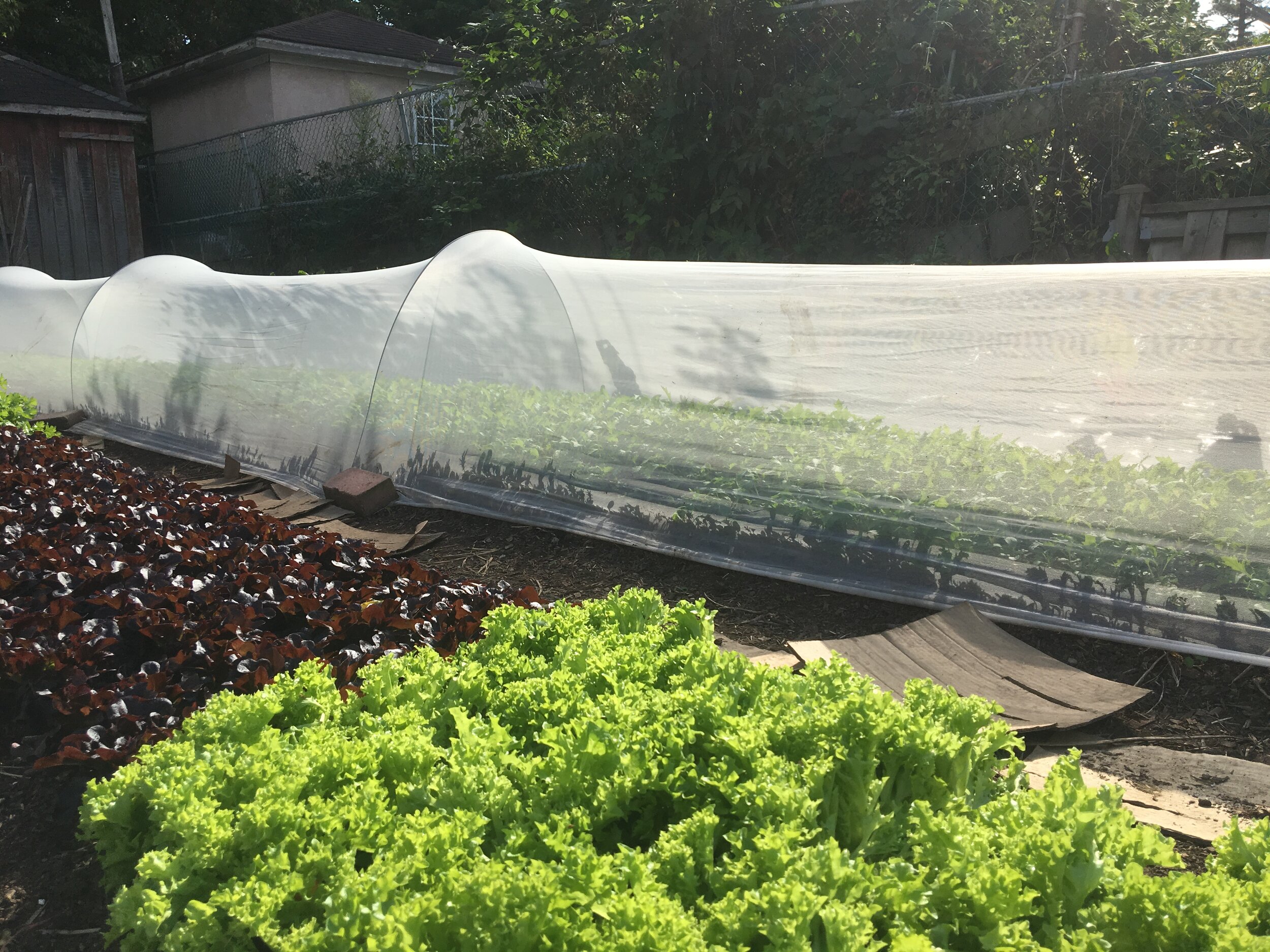
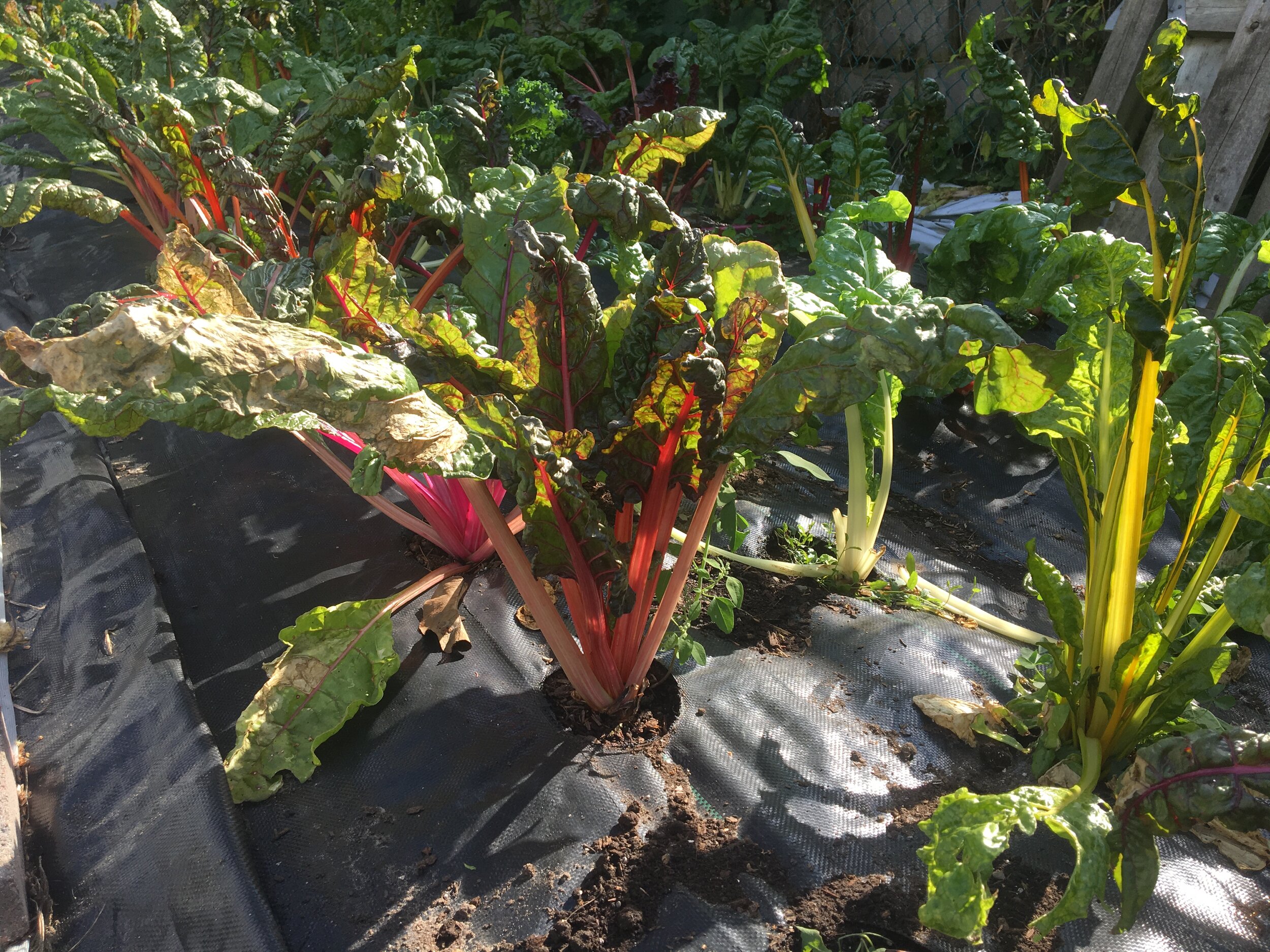
Tomato breeding, High-Altlitude Growing, Passive Solar Greenhouses, Mountain Figs
In the first half of the show we chat with tomato breeder Fred Hempel, who has been breeding tomatoes on his small farm in California since 2006. His breeding business, Artisan Seeds, has produced a number of varieties that are grown by farmers and gardeners around the world. Most of these are striped cherry tomatoes, known for their flavour and aesthetic appeal. His current breeding work is focused on extended shelf life and disease resistance.
In the second half of the show, we chat with Penn and Cord Parmenter, who grow food in the Rocky Mountains of Colorado at an elevation of 8000 feet. They discuss bio-intensive gardening methods, passive solar greenhouses, and cold-hardy crops and vegetable varieties.
In the Biggs-On-Figs segment, Steven chats with Tony Christini, a fig grower in West Virginia. Tony’s focus is on hardy and early-ripening figs.
Breeding Tasty Tomatoes
Our first guest is tomato breeder Fred Hempel. Fred has been breeding tomatoes on his small farm in California since 2006. Before that, he bred tomatoes in his backyard and in a community garden. Fred first grew tomatoes with his mother, as a child in Michigan. Fred’s son and daughter have been involved in his tomato breeding projects since the beginning. Both of them will visit Mexico with him this winter to help with breeding work. Fred trained as a plant biologist with a general background in genetics. His breeding business, Artisan Seeds, has produced a number of varieties that are grown by farmers and gardeners around the world. Most of these are striped cherry tomatoes, known for their flavor and aesthetic appeal. In his current breeding work, Fred is working on extended shelf life and disease resistance.
Tomato Seed-Starting Guide
Here’s our guide to growing tomato plants from seed.
High-Altitude Growing
“Adaptation is one of our best tools up here in the clouds.”
In the second half of the show, we chat with Penn and Cord Parmenter, who grow food in the Rocky Mountains of Colorado at an elevation of 8000 feet. They share tips on passive solar greenhouses, biointensive gardening methods, and cold-hardy crops and cold-hardy vegetable varieties that they grow in their high-altitude garden. Penn’s seed business, Miss Penn’s Mountain Seeds, focuses on mountain-adapted varieties.
“We fail as much as we succeed!”
Biggs on Figs
In the Biggs-On-Figs segment, Steven chats with Tony Christini, a fig grower in West Virginia. Tony’s focus is on cold-hardy and early-ripening figs. Tony created the Mountain Figs website, where he has information about cold-tolerant fig varieties, and comparisons of fig flavour and appearance. See below for another chat with Tony, where he talks a bit more in details about his top 5 fig varieties for cold climates.
Click below to hear more about cold-tolerant fig varieties, with Tony Christini from Mountain Figs
Growing Figs in the Mountains
Figs harvest from Tony Christini’s fig trees in West Virginia
West Virginia Fig Grower Shares Top Varieties
Excerpt from The Food Garden Life Show, November 2019
In The Biggs-on-Figs segment, Steven talks with Tony Christini, a fig grower in West Virginia whose focus is hardy and early-ripening fig varieties suited to his mountain growing conditions.
Grow Figs in Seattle
Seattle Fig Grower Creates Ultimate Fig Breba List
Excerpt from The Food Garden Life Show, October 2019
In The Biggs-on-Figs segment, Steven talks with Ben Nguyen from Seattle Garden & Fruit Adventures about growing figs in Seattle and about Ben’s Ultimate Fig Breba List.
Ocracoke Fig Festival
A Festival to Celebrate Figs
Excerpt from The Food Garden Life Show, July 2019
Tune in for a chat with Sundae Horn, who helps to organize the Ocracoke Fig Festival on Ocracoke Island in North Carolina. This two-day festival takes place this year on August 16th and 17th, and celebrates figs through food, history, music, and all sorts of fig stuff. Find out more about the festival—and find the recipe for Ocracoke fig cake—on the website for the Ocracoke Preservation Society.




